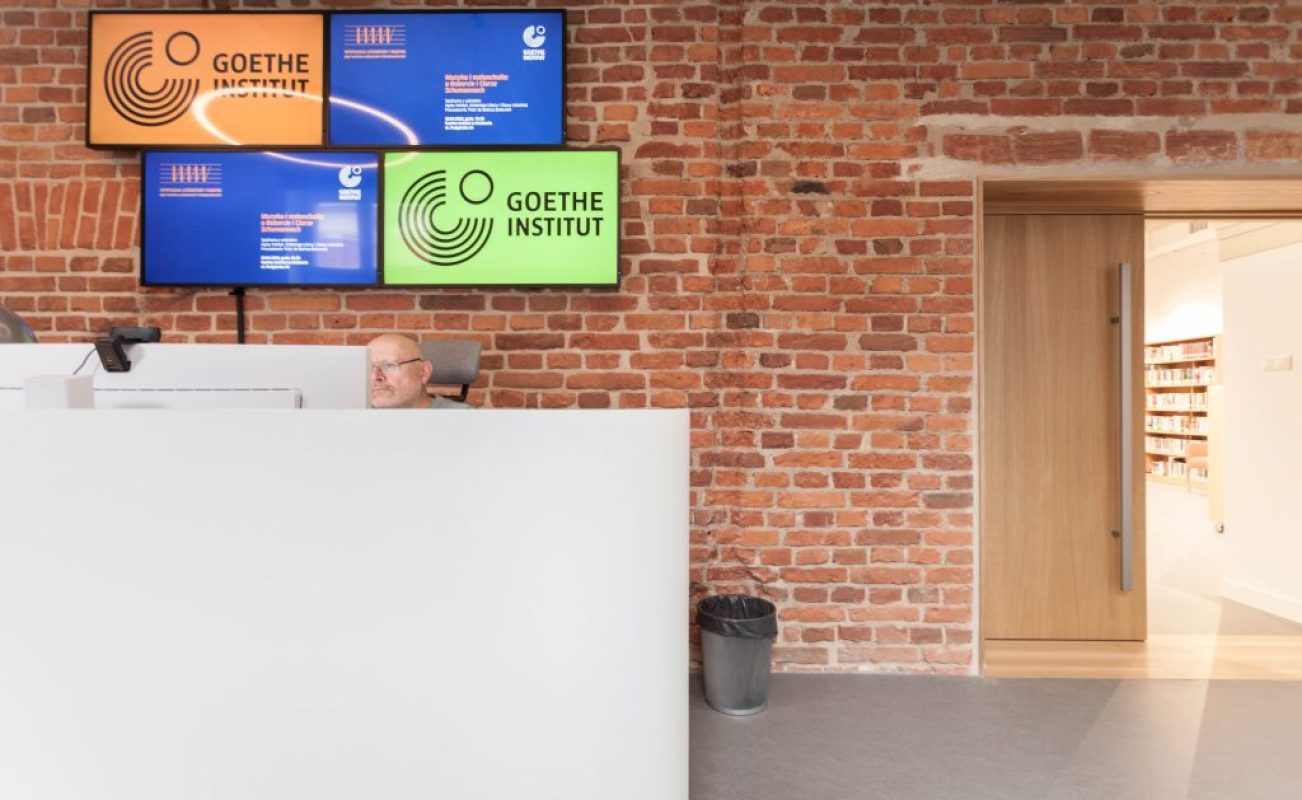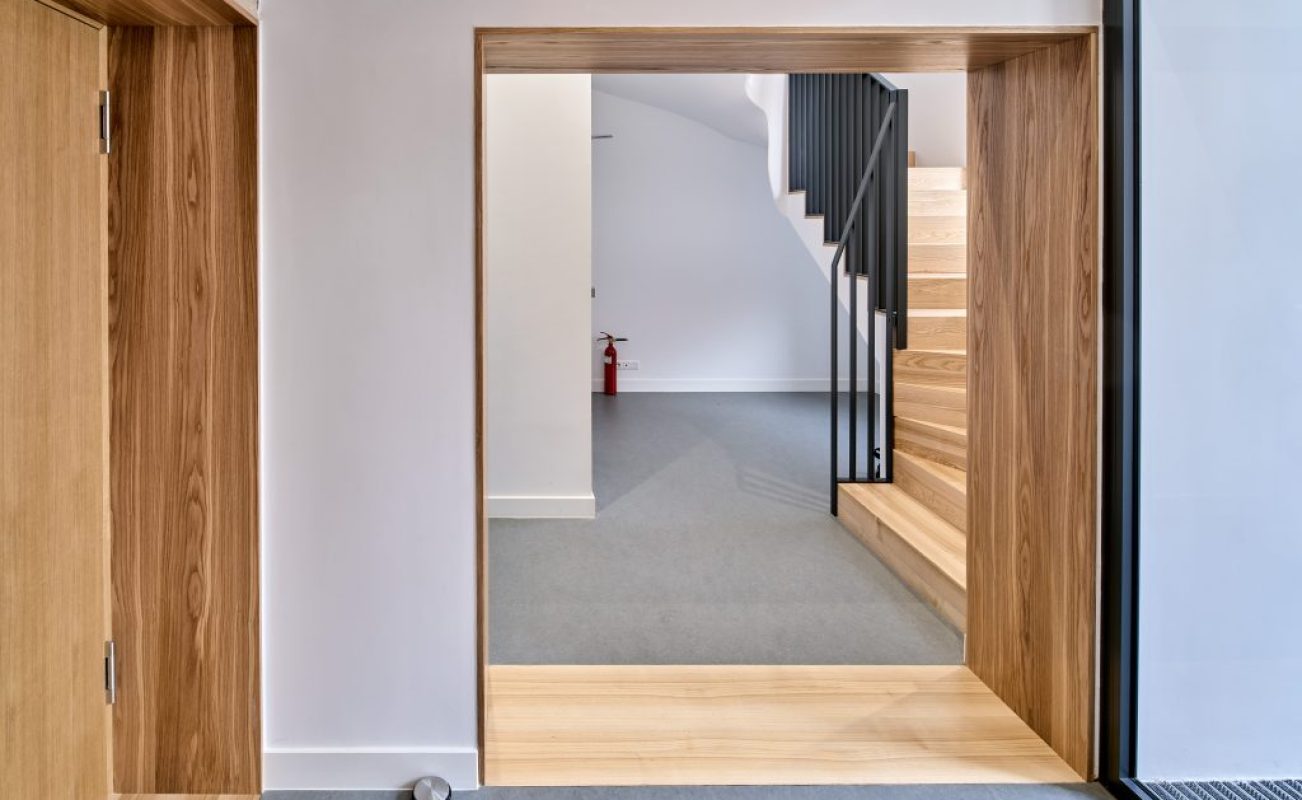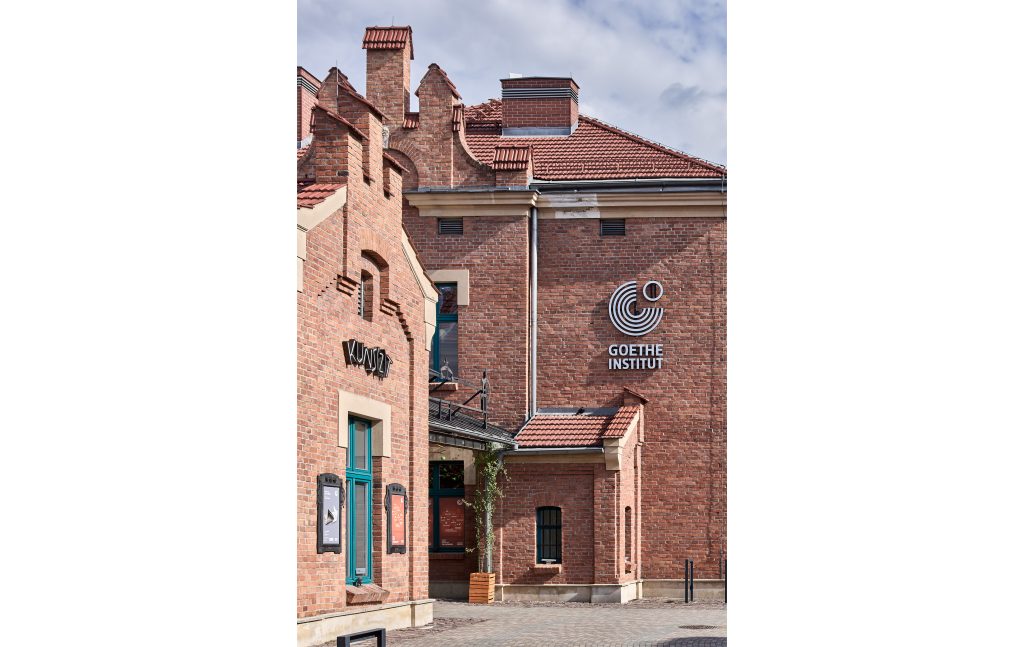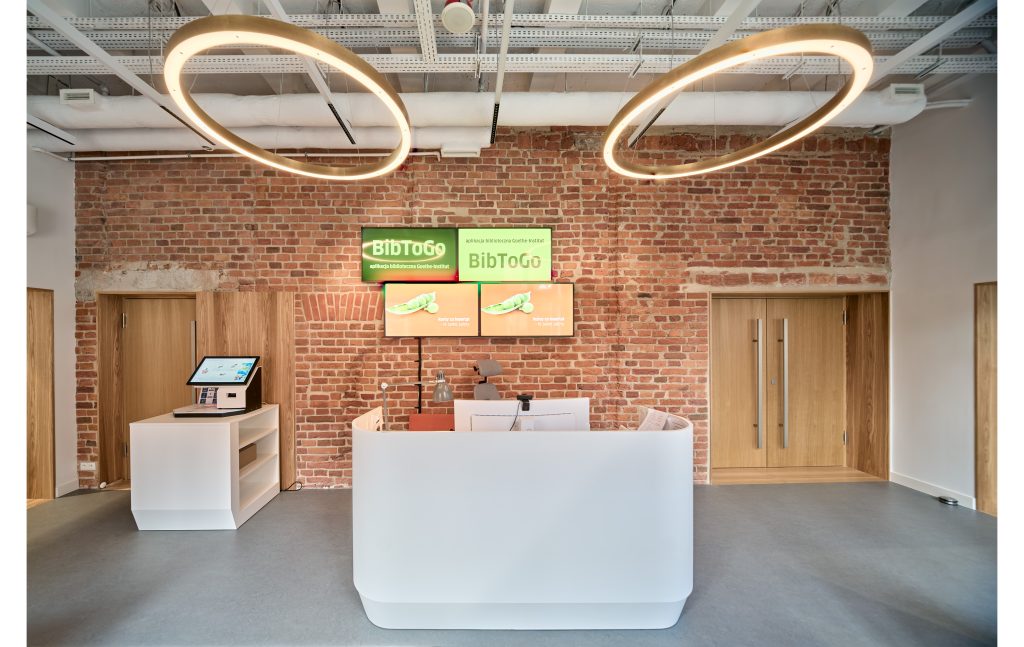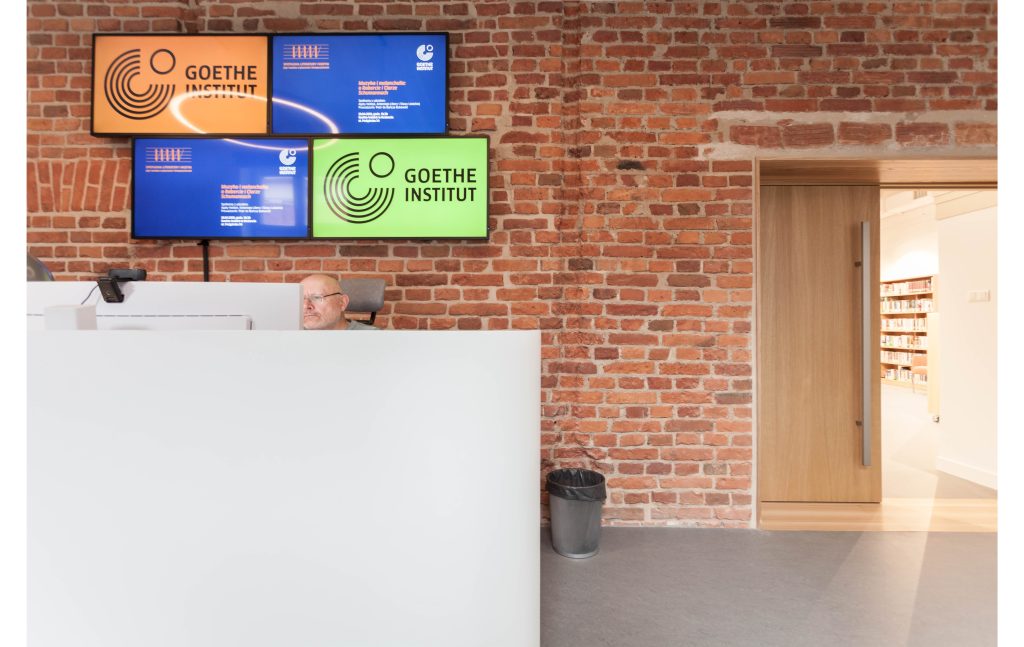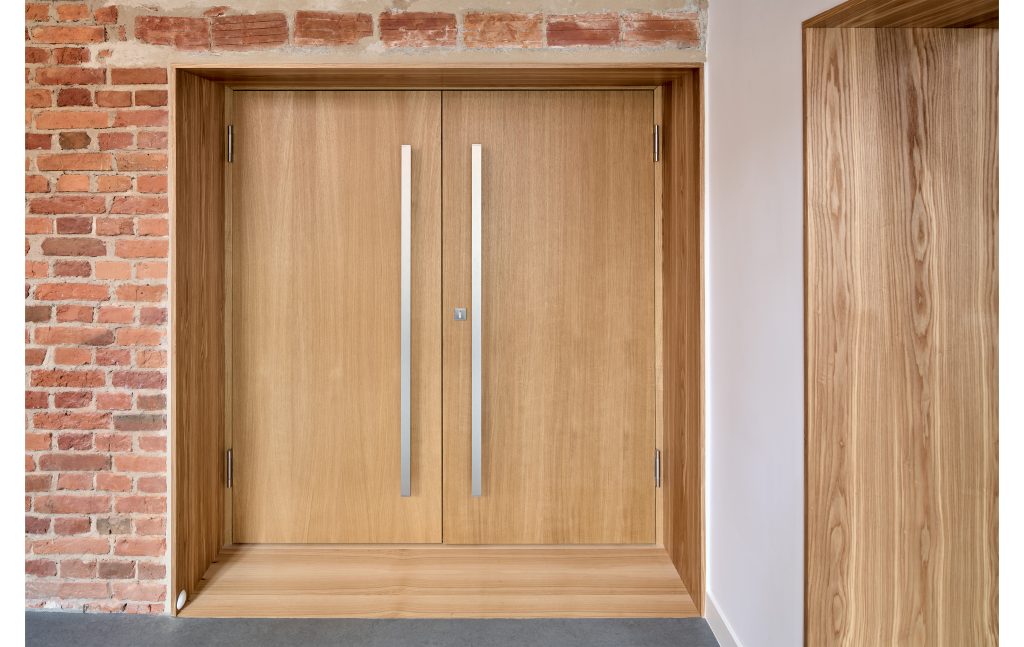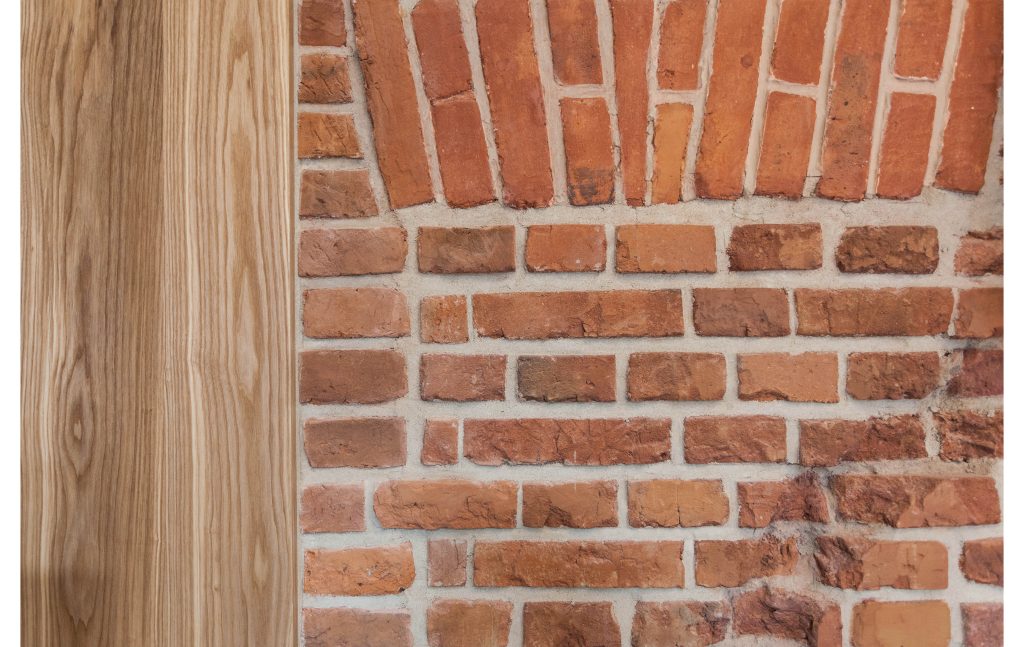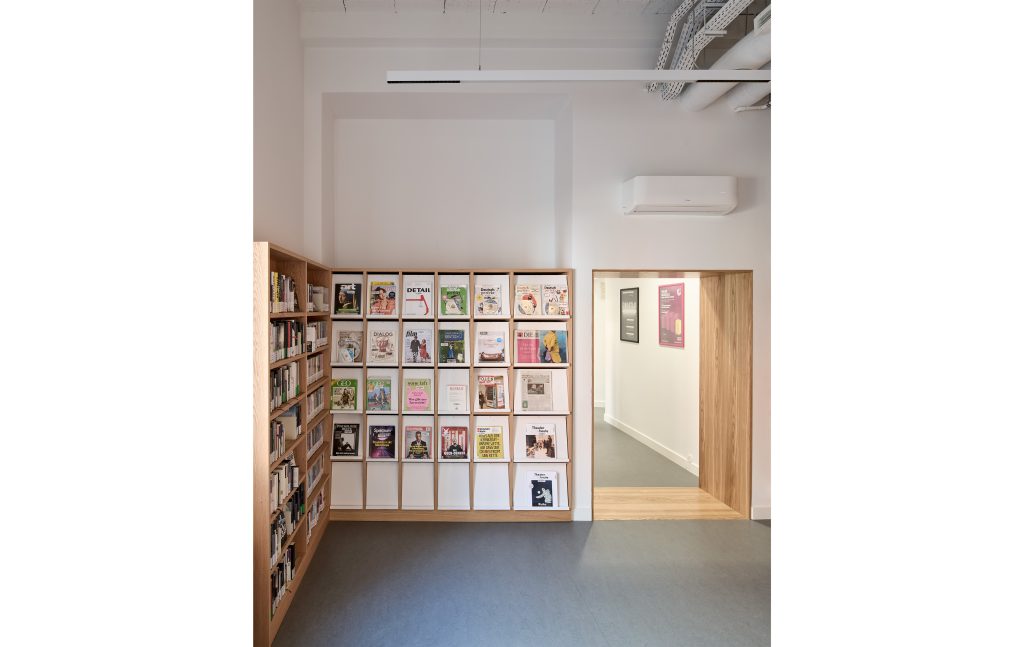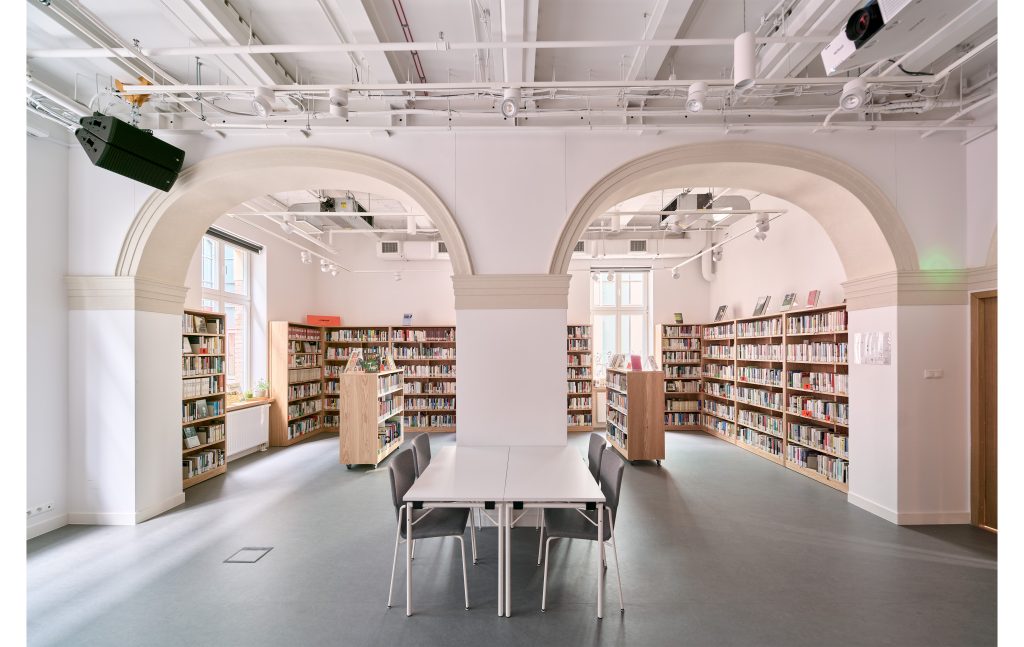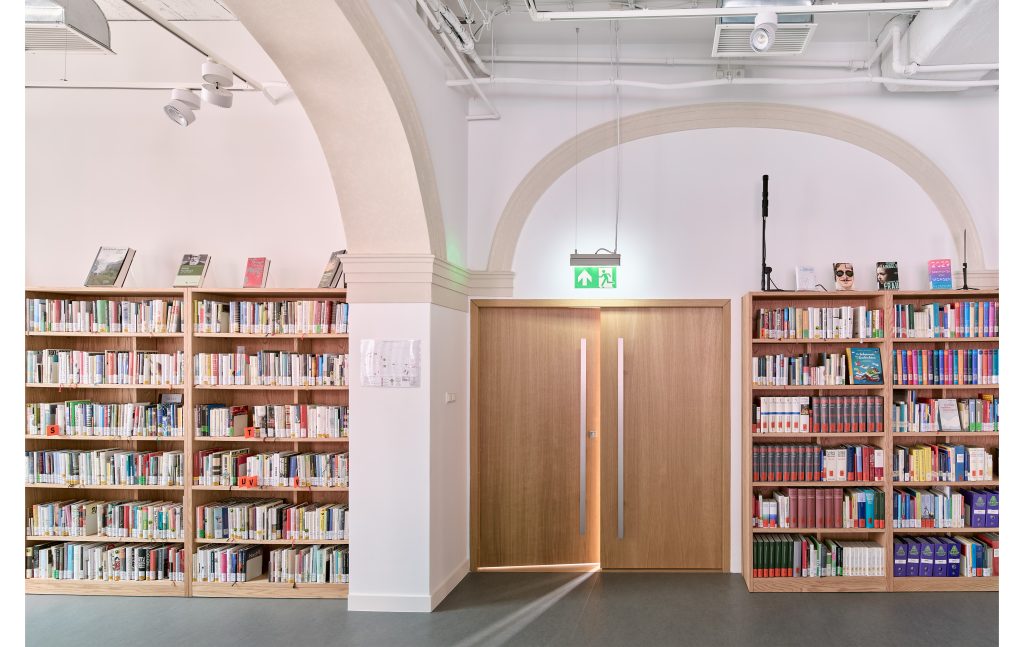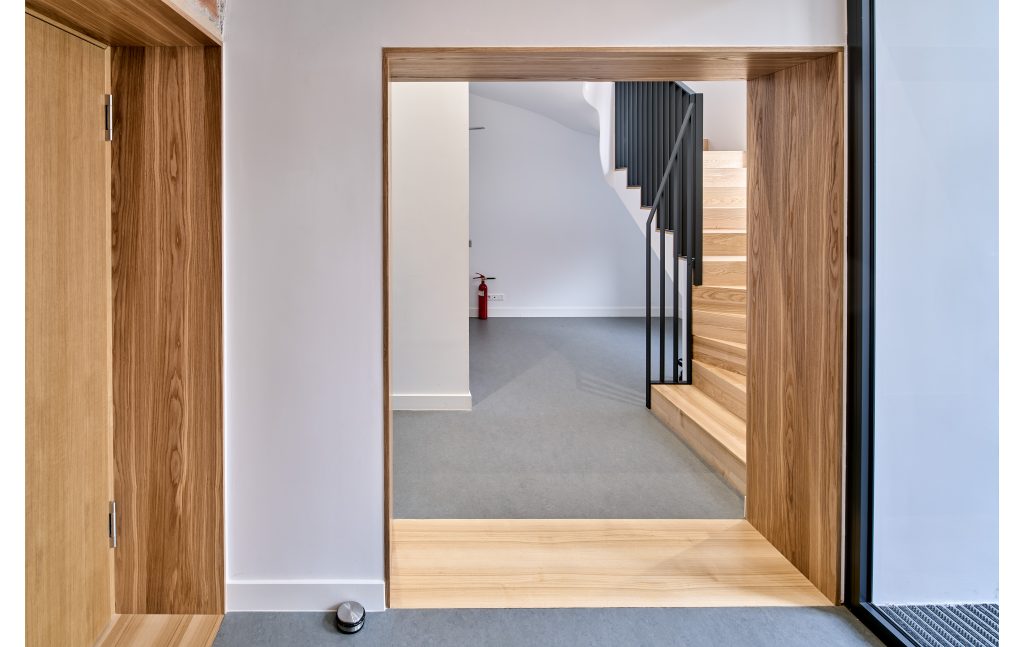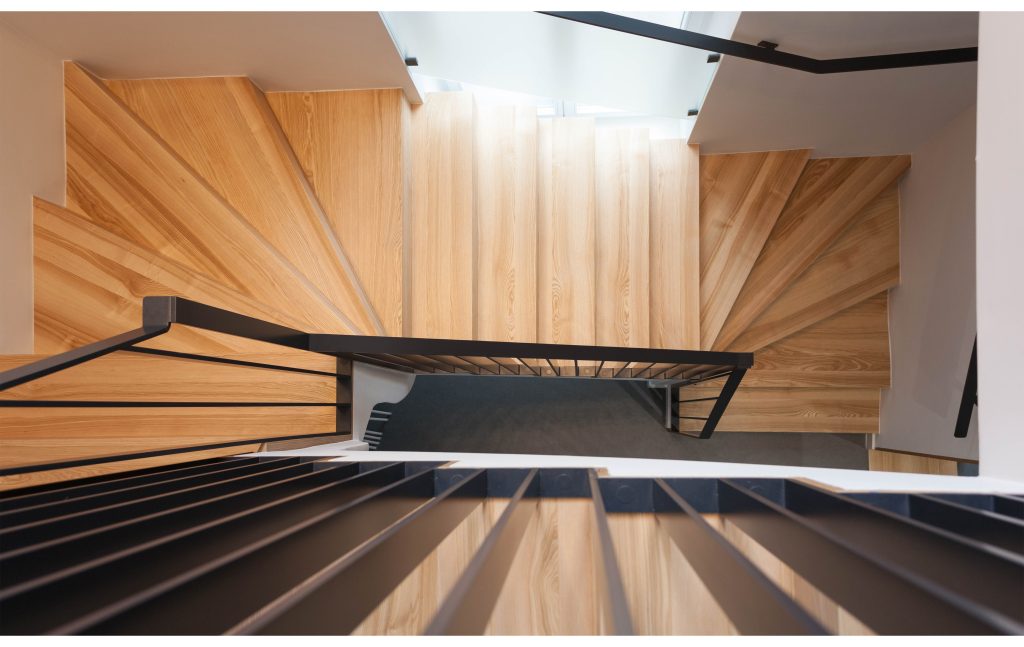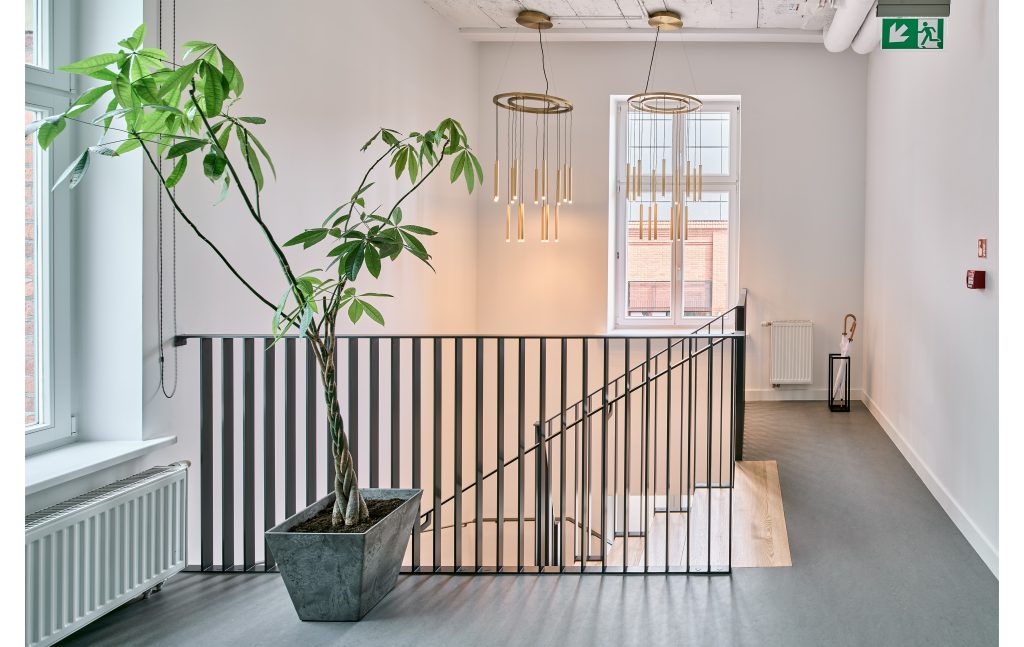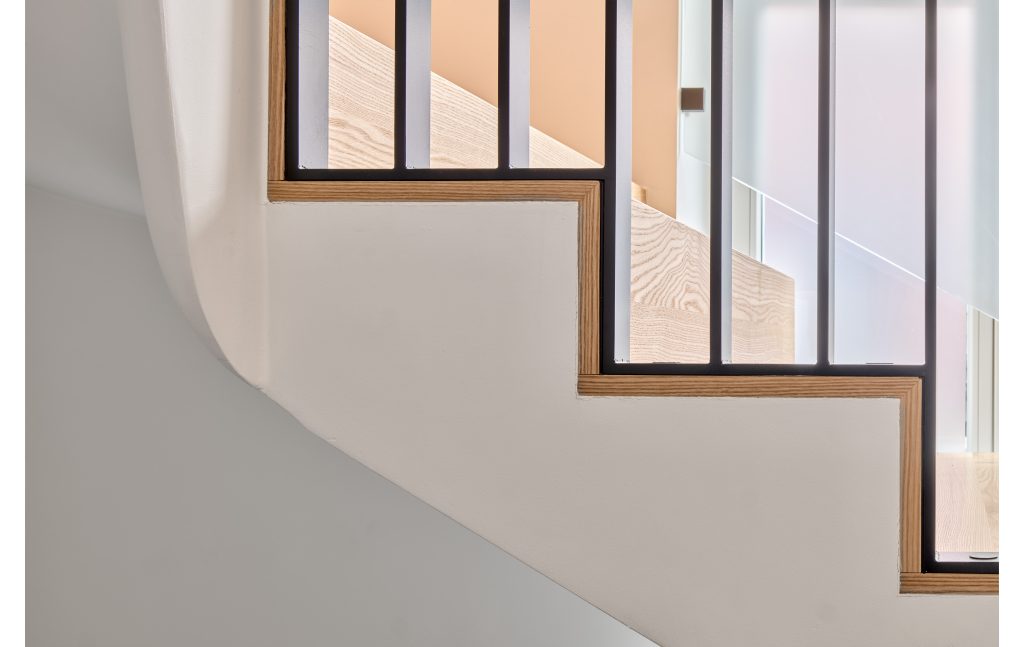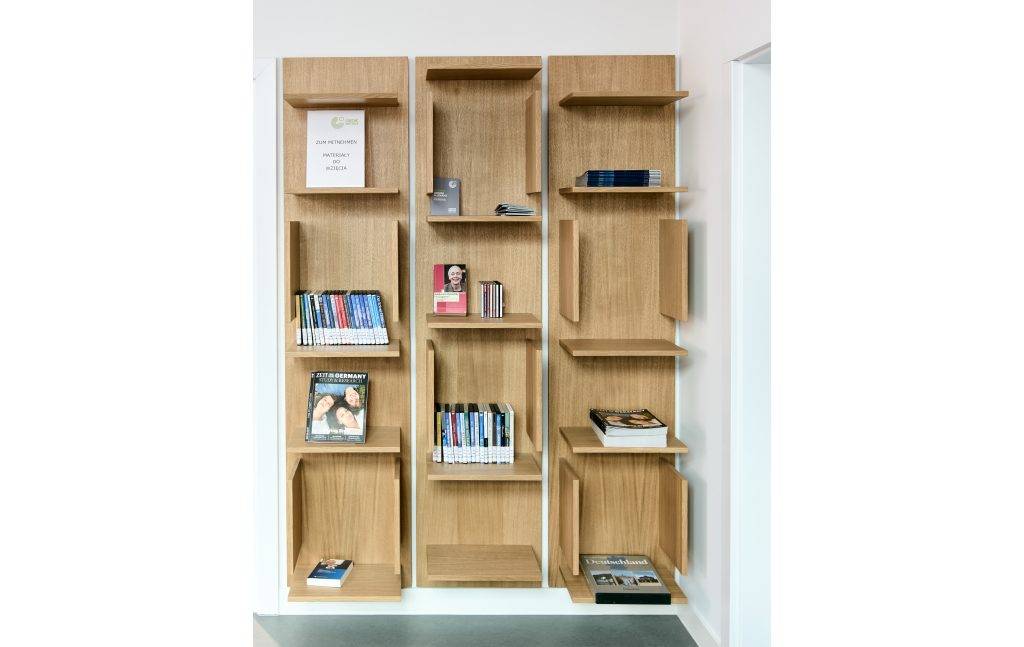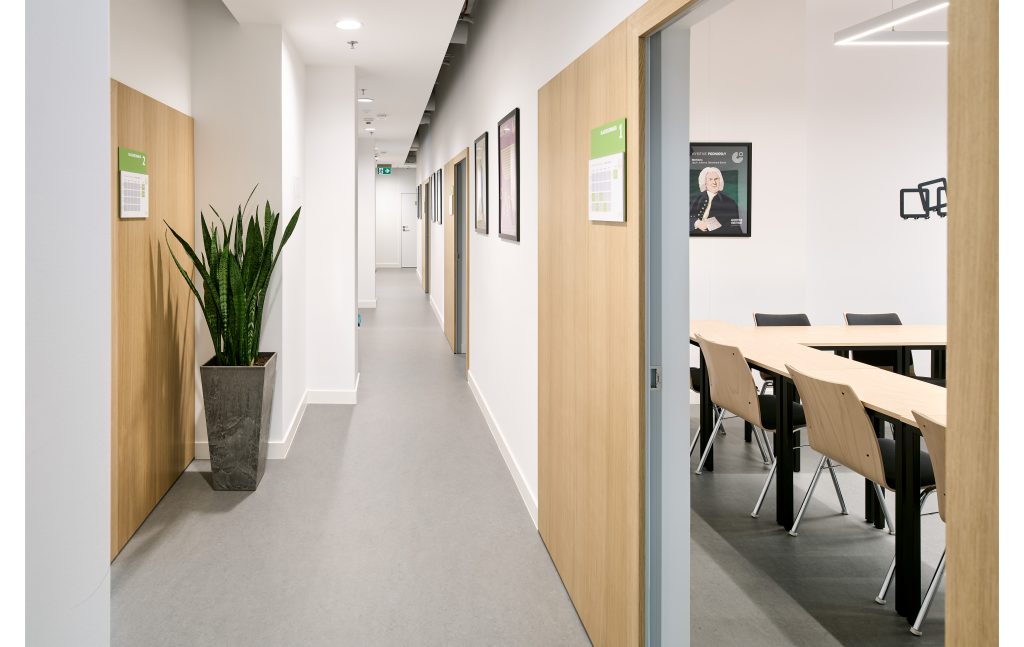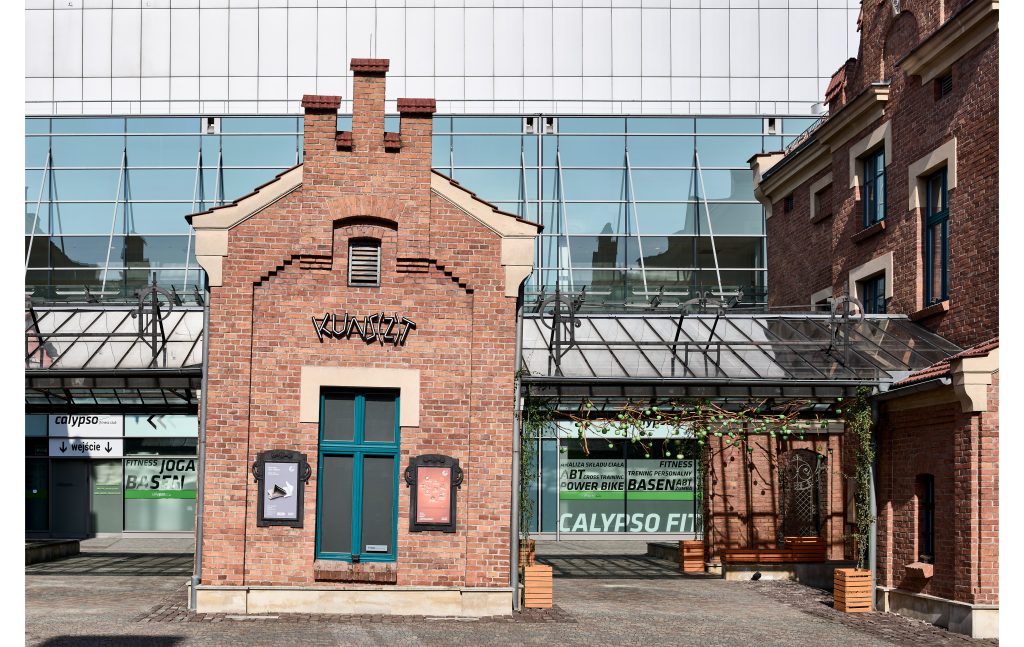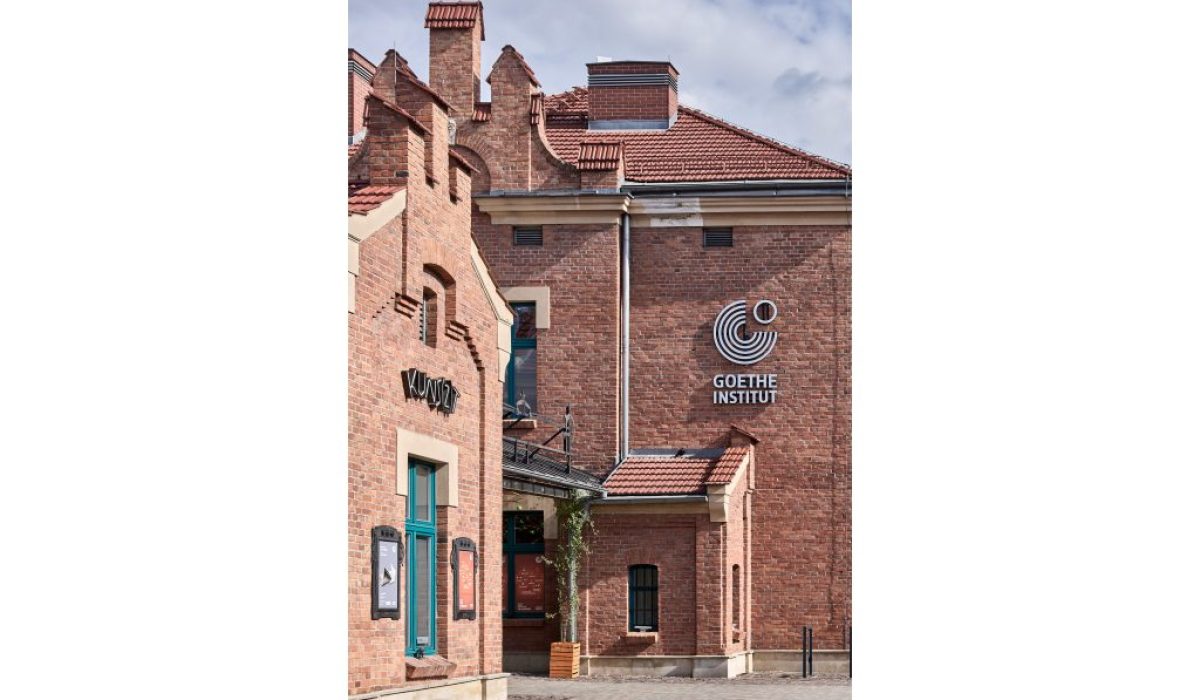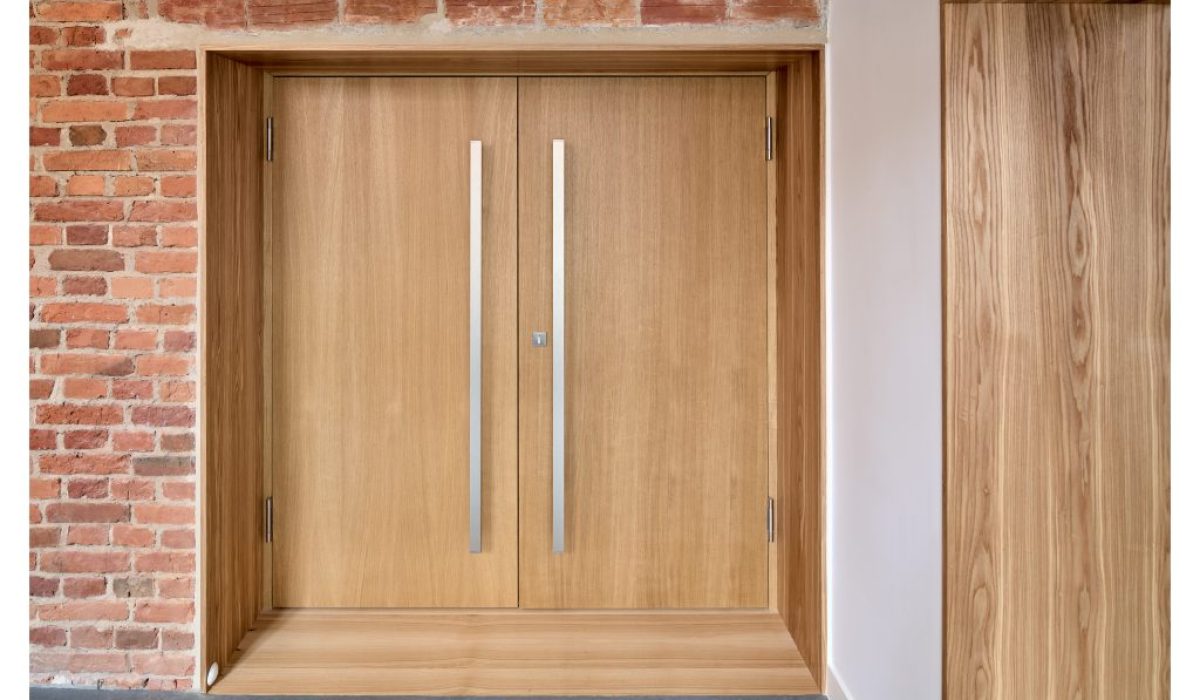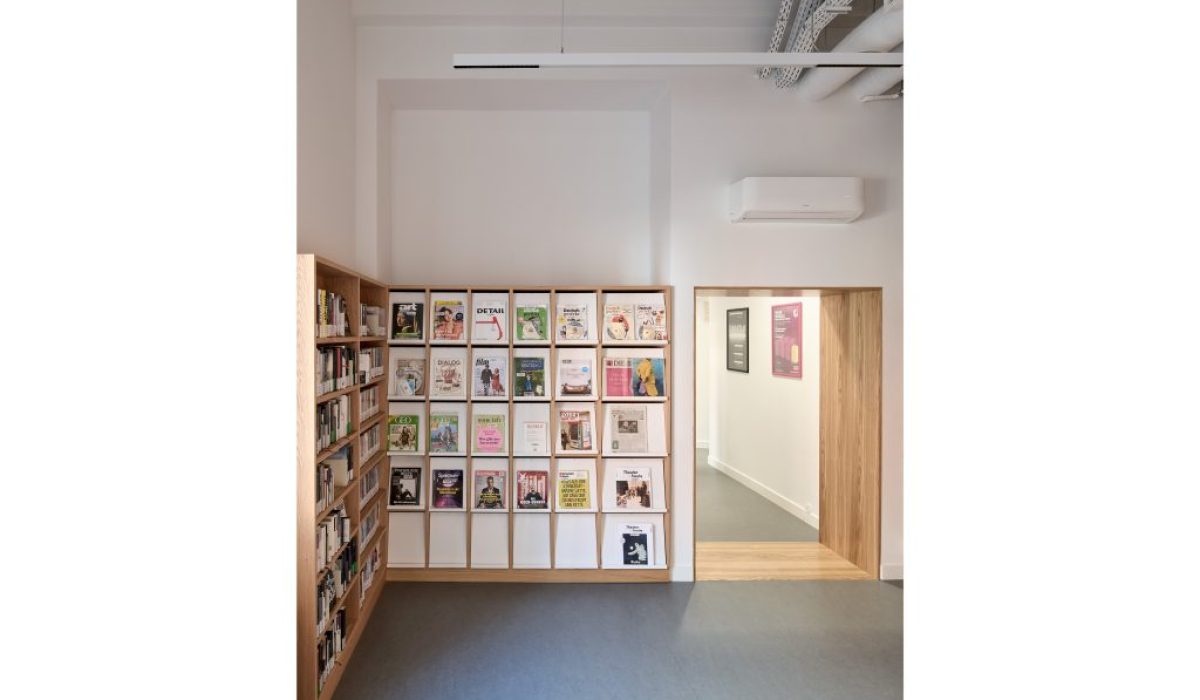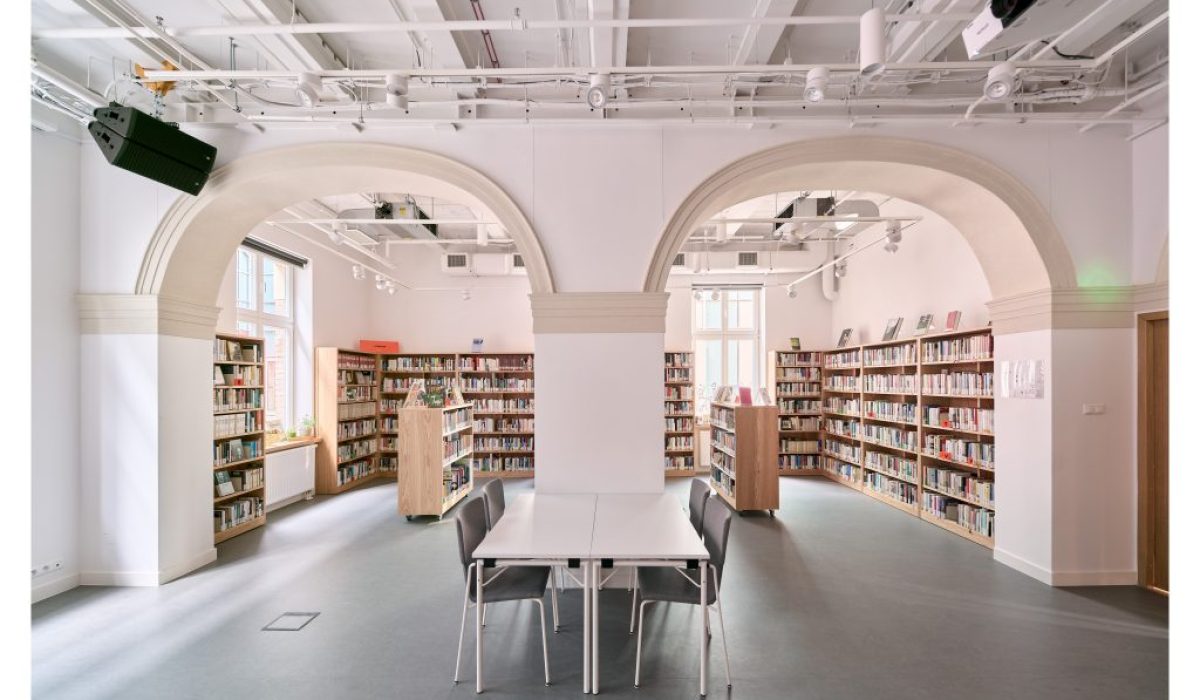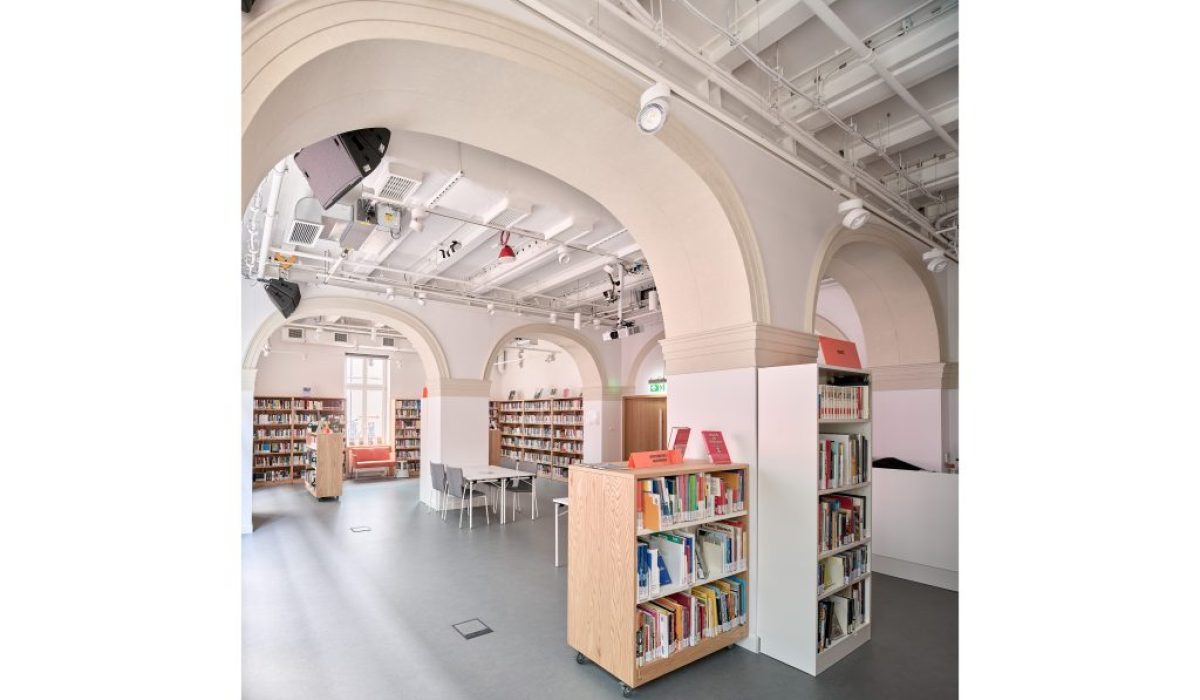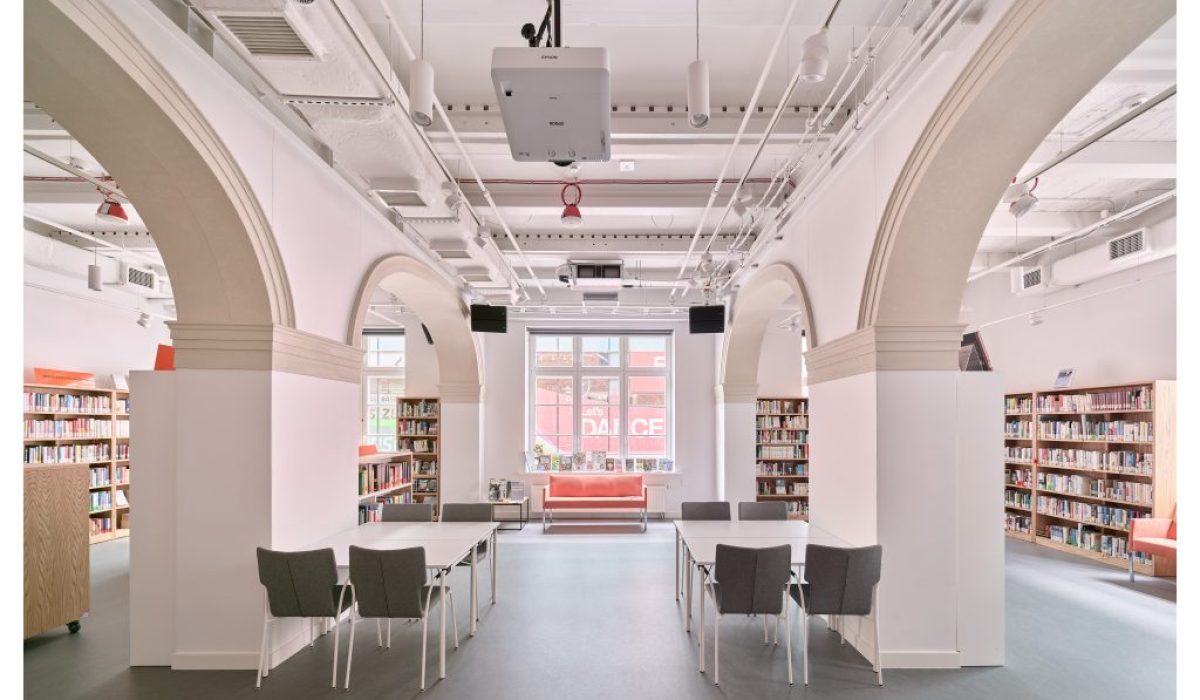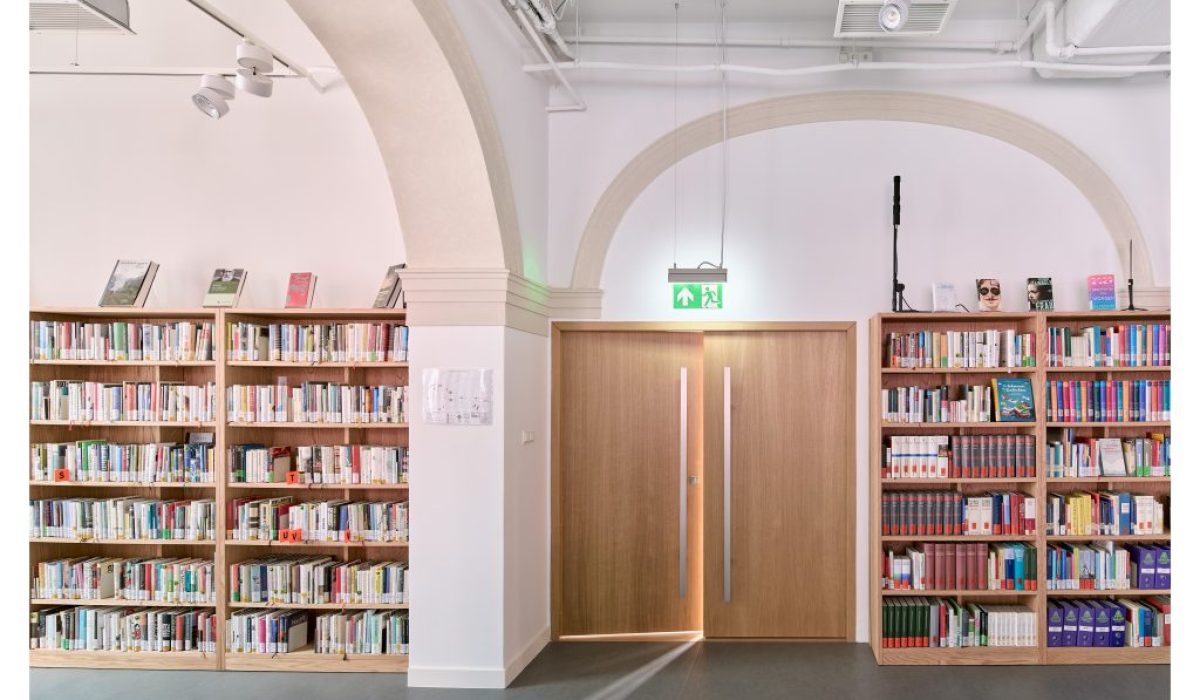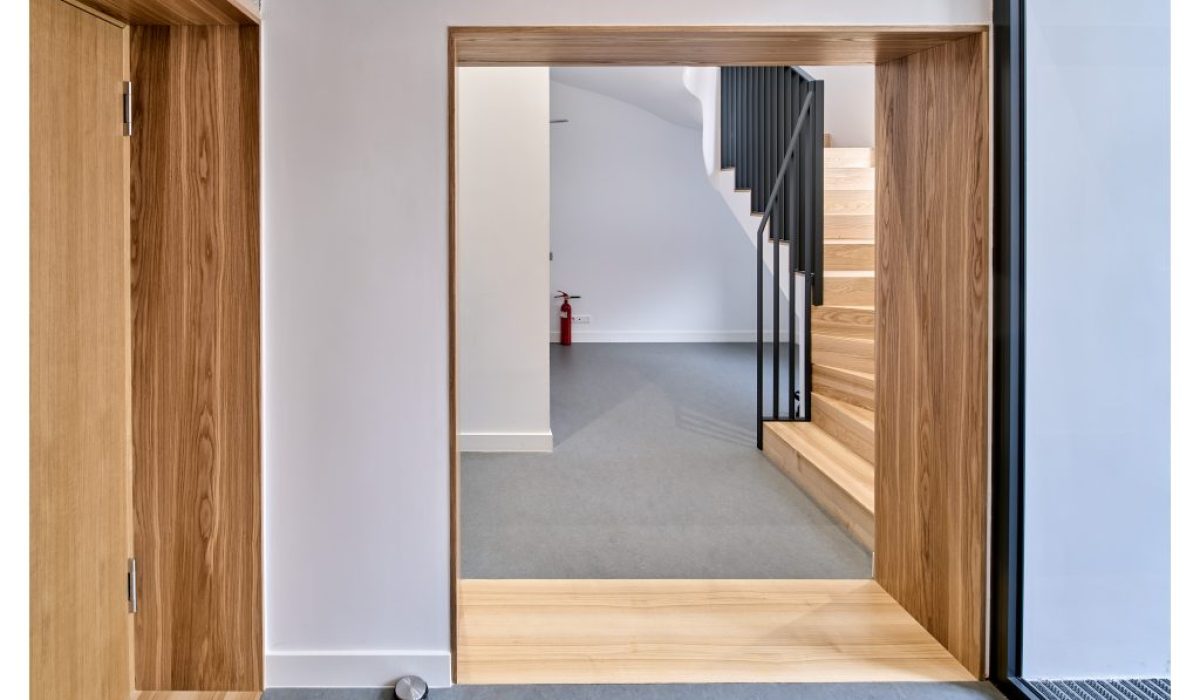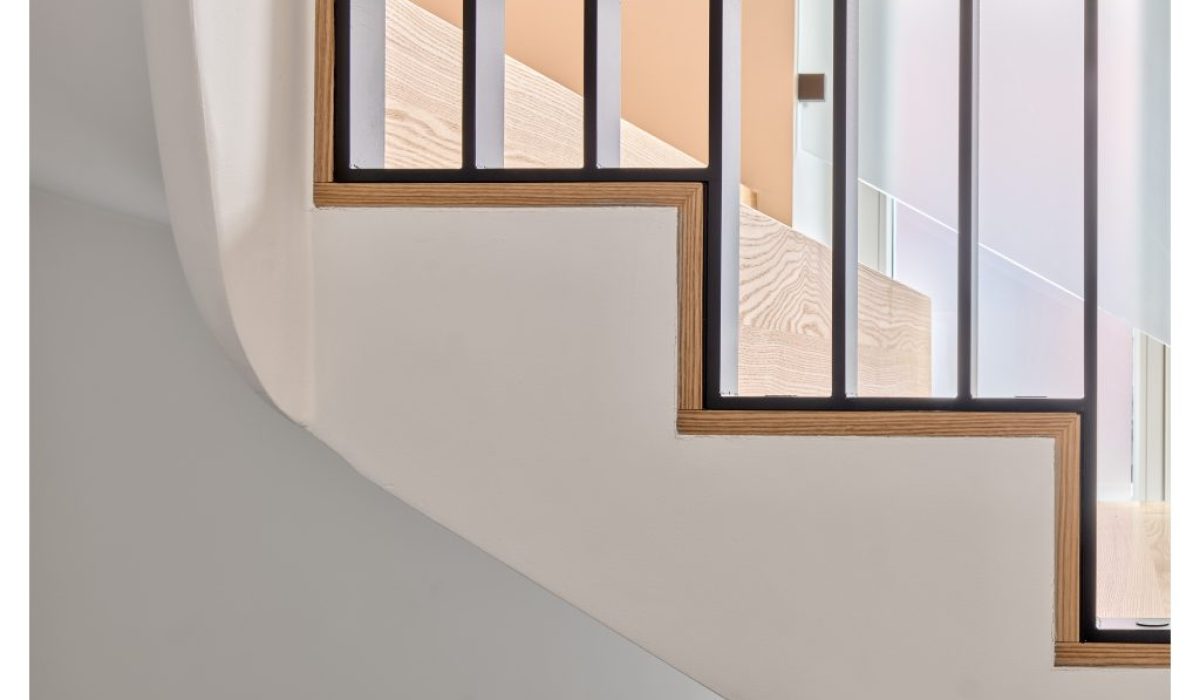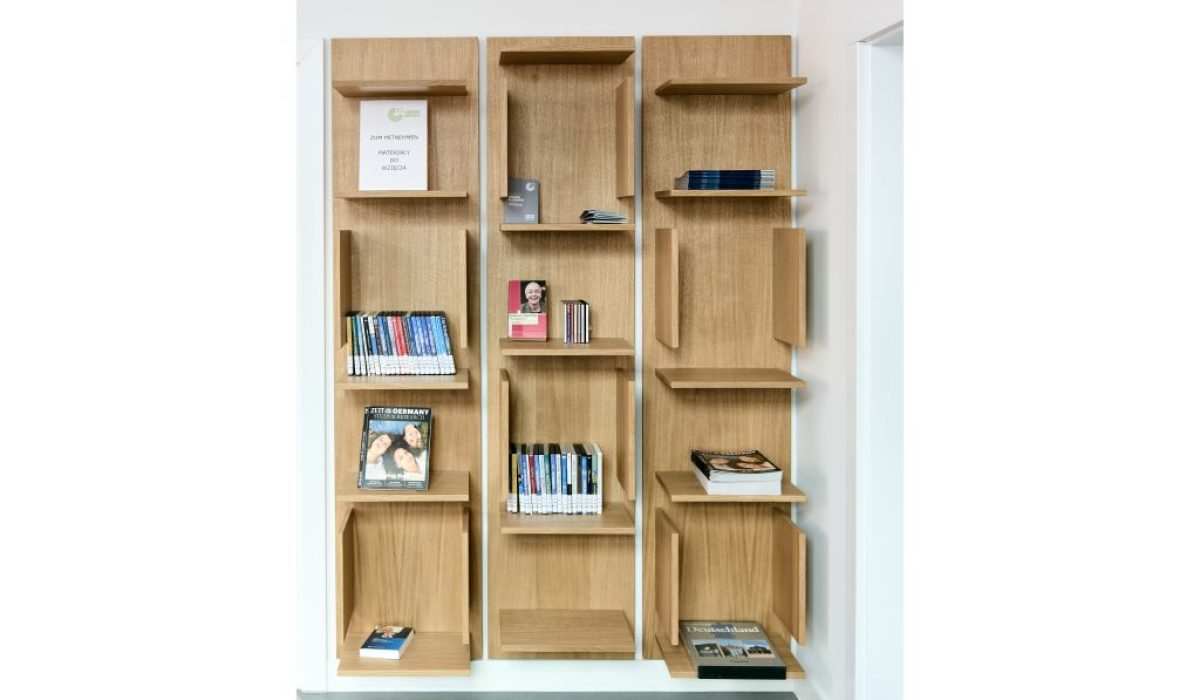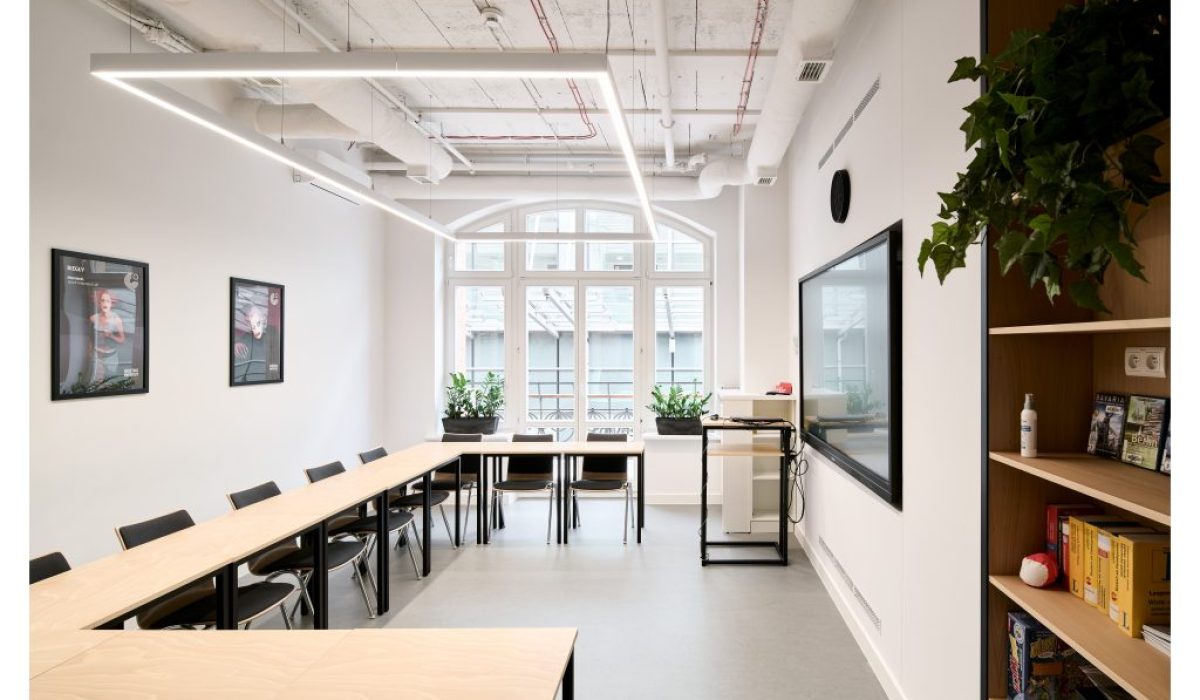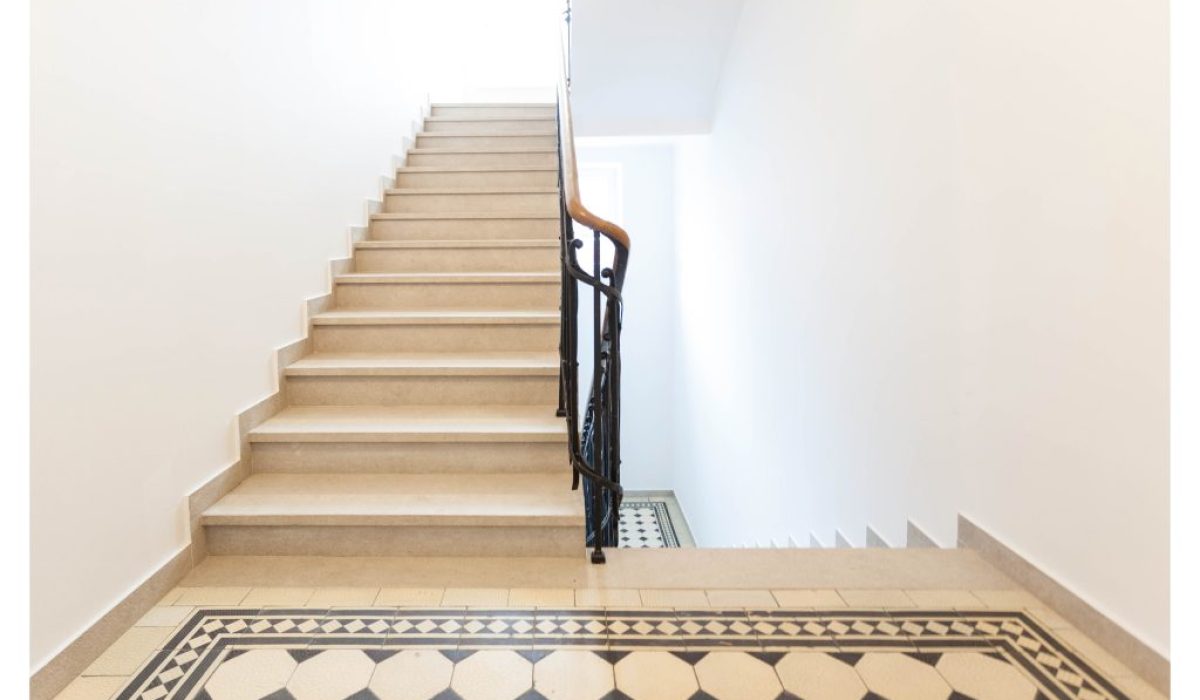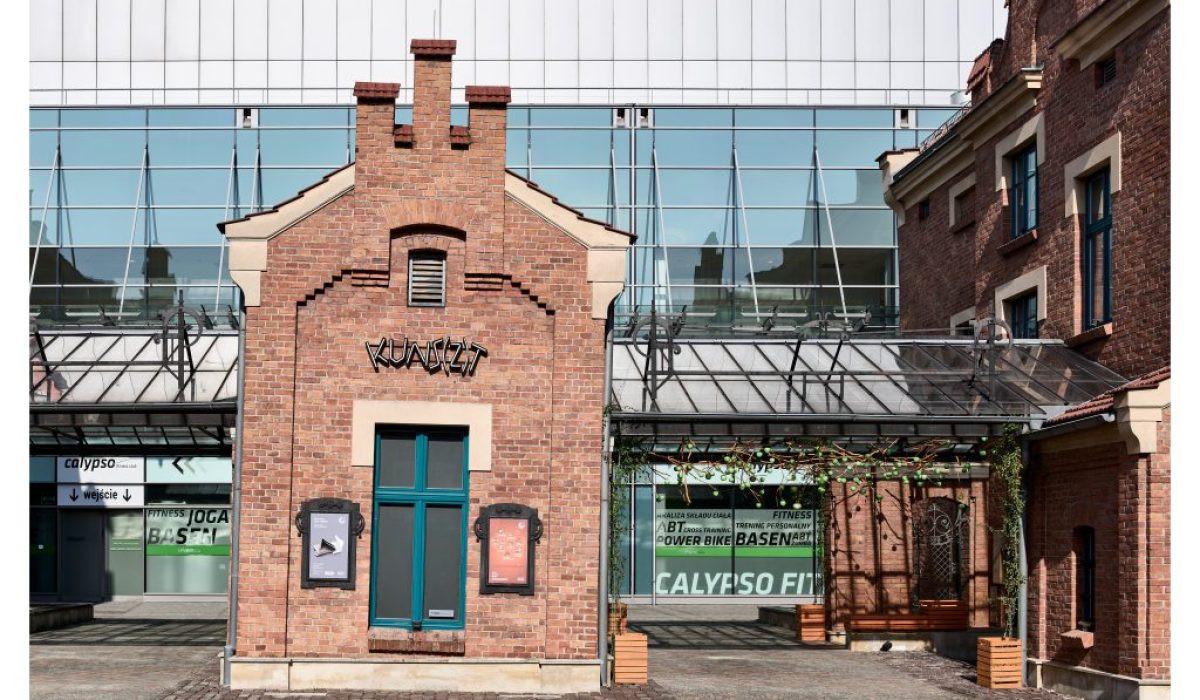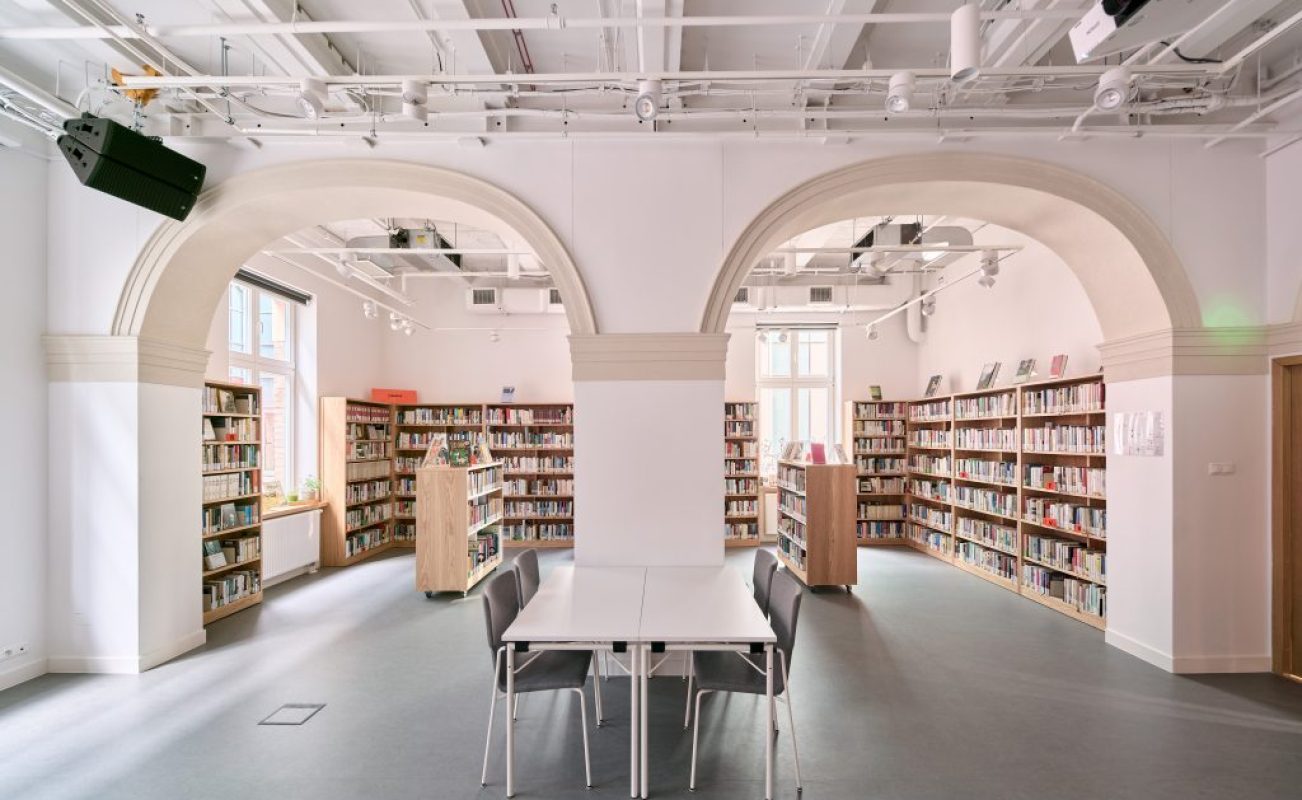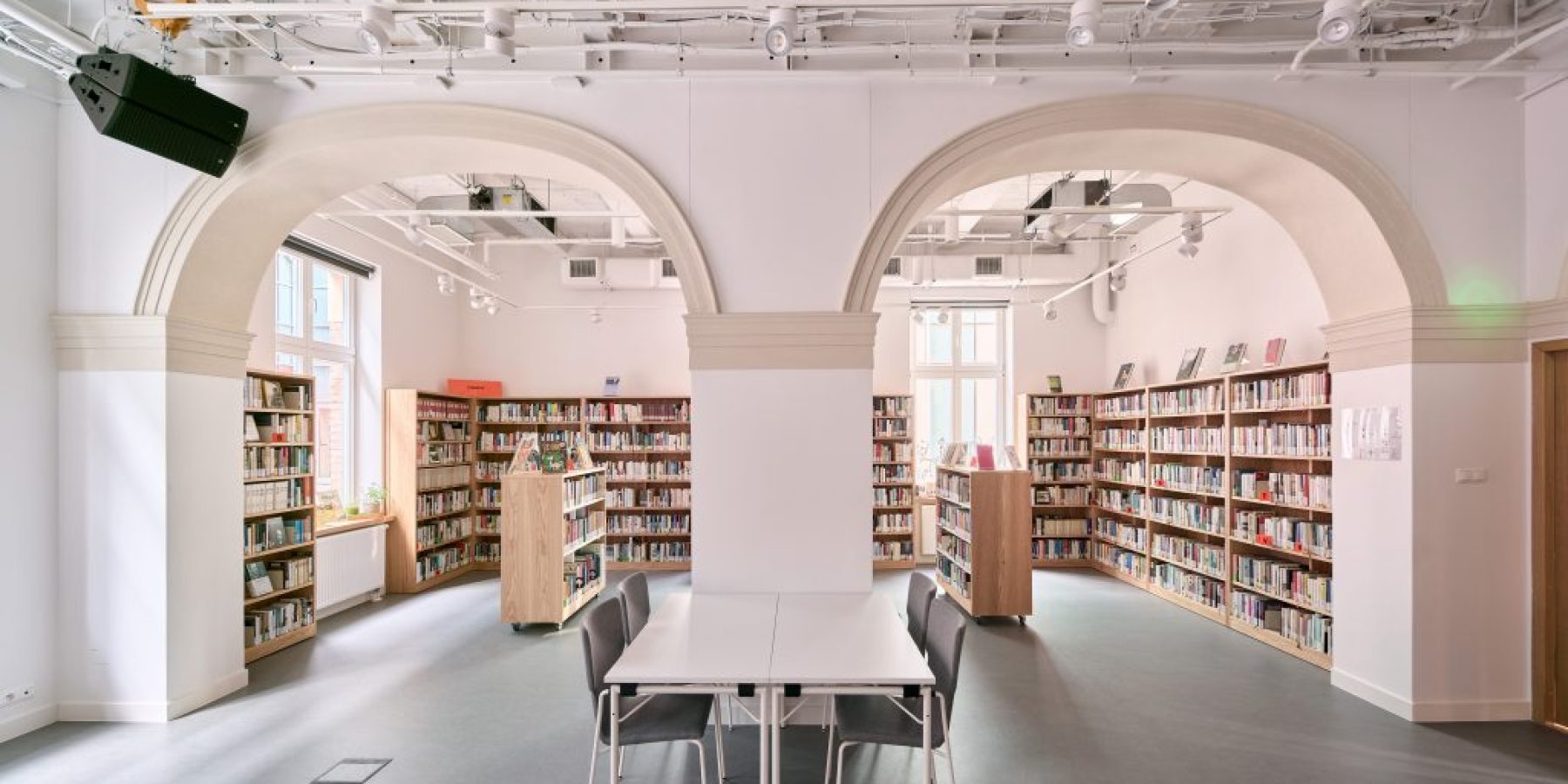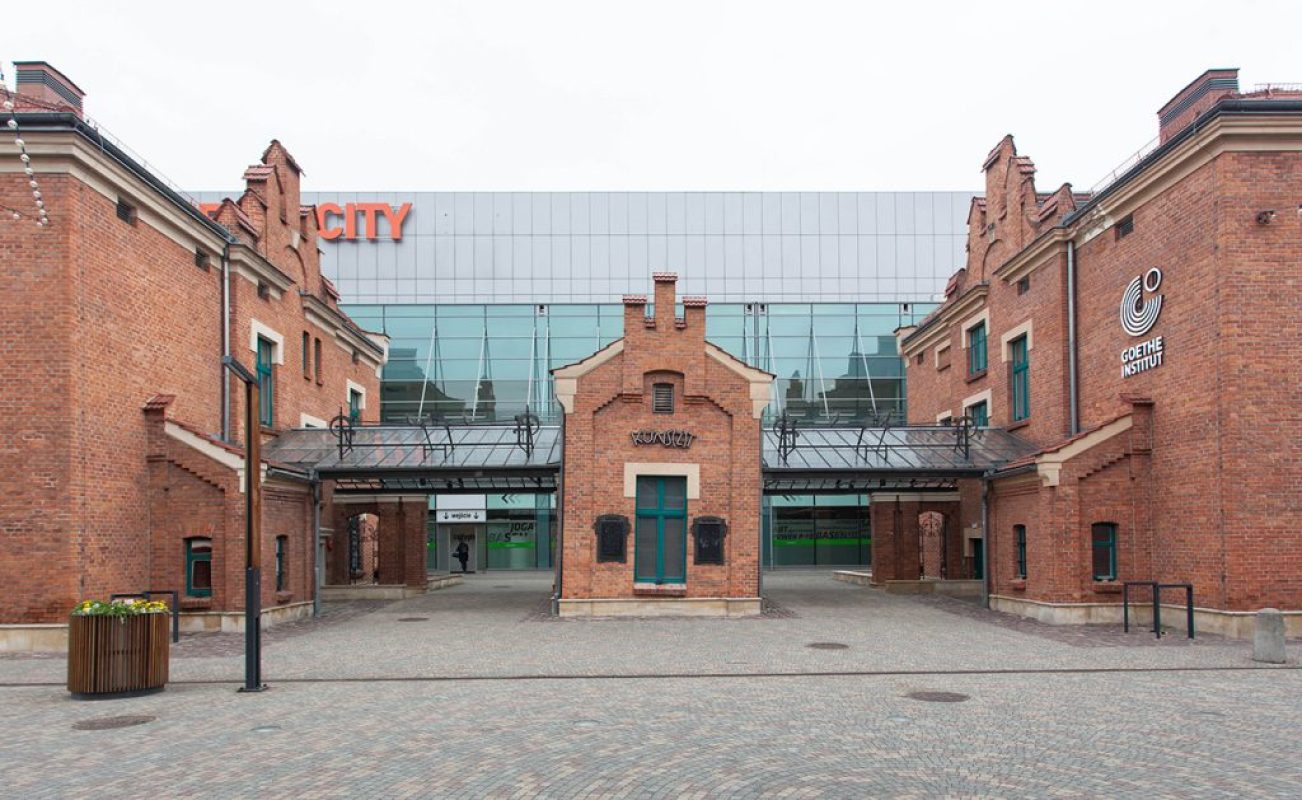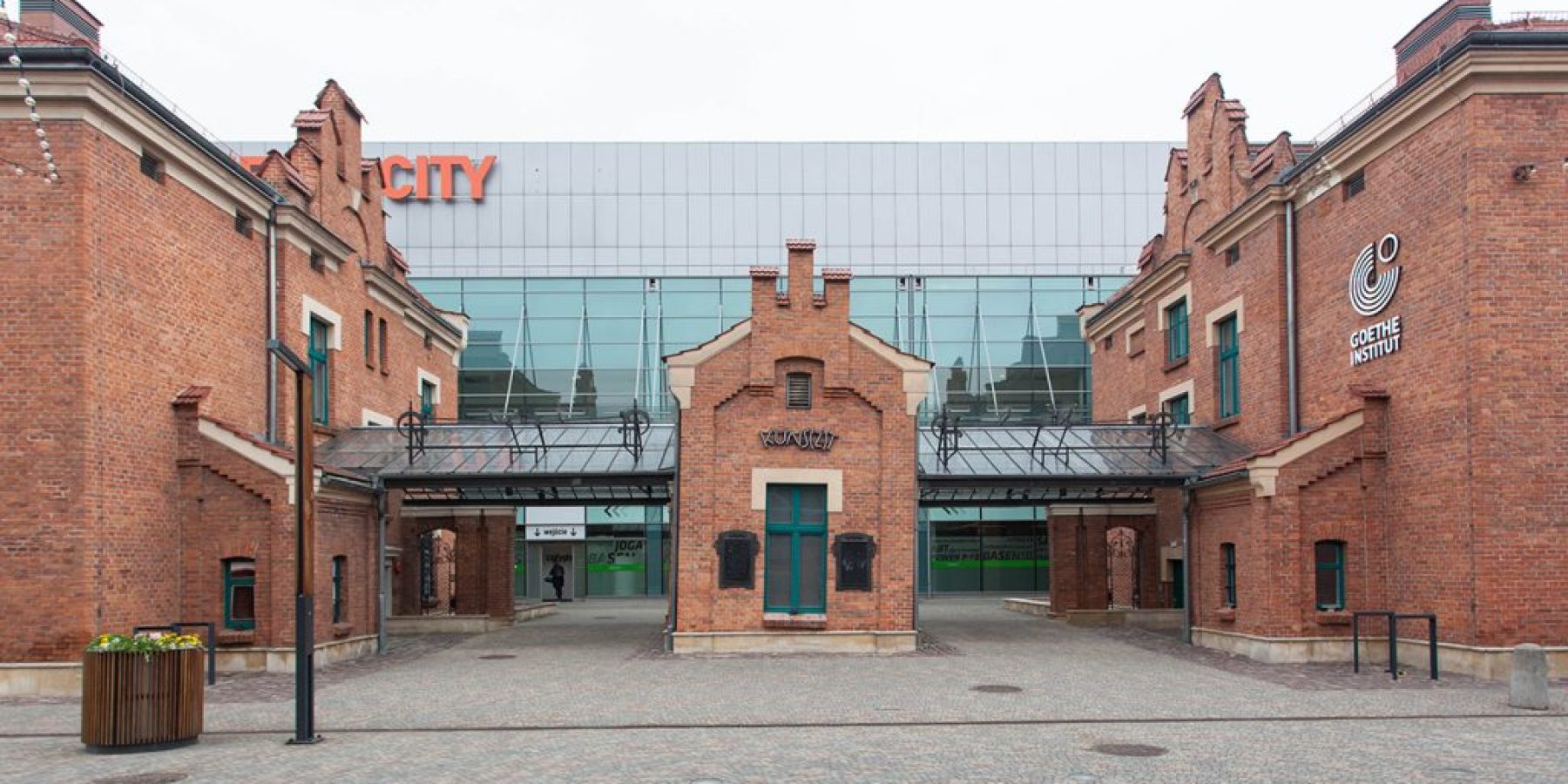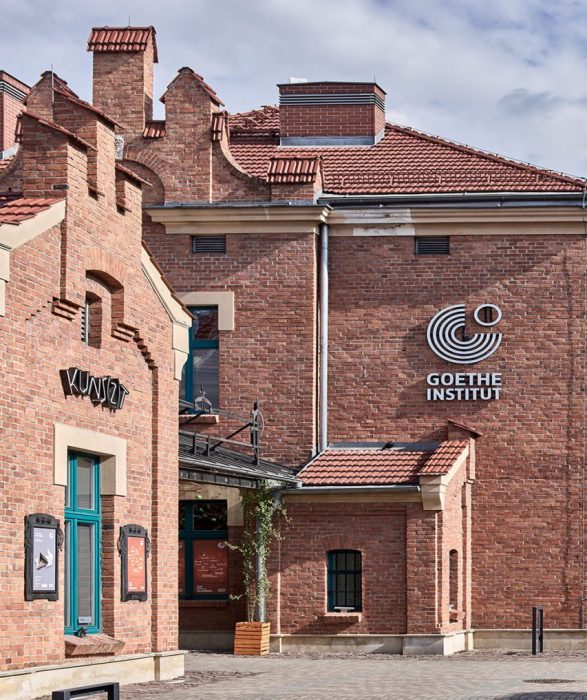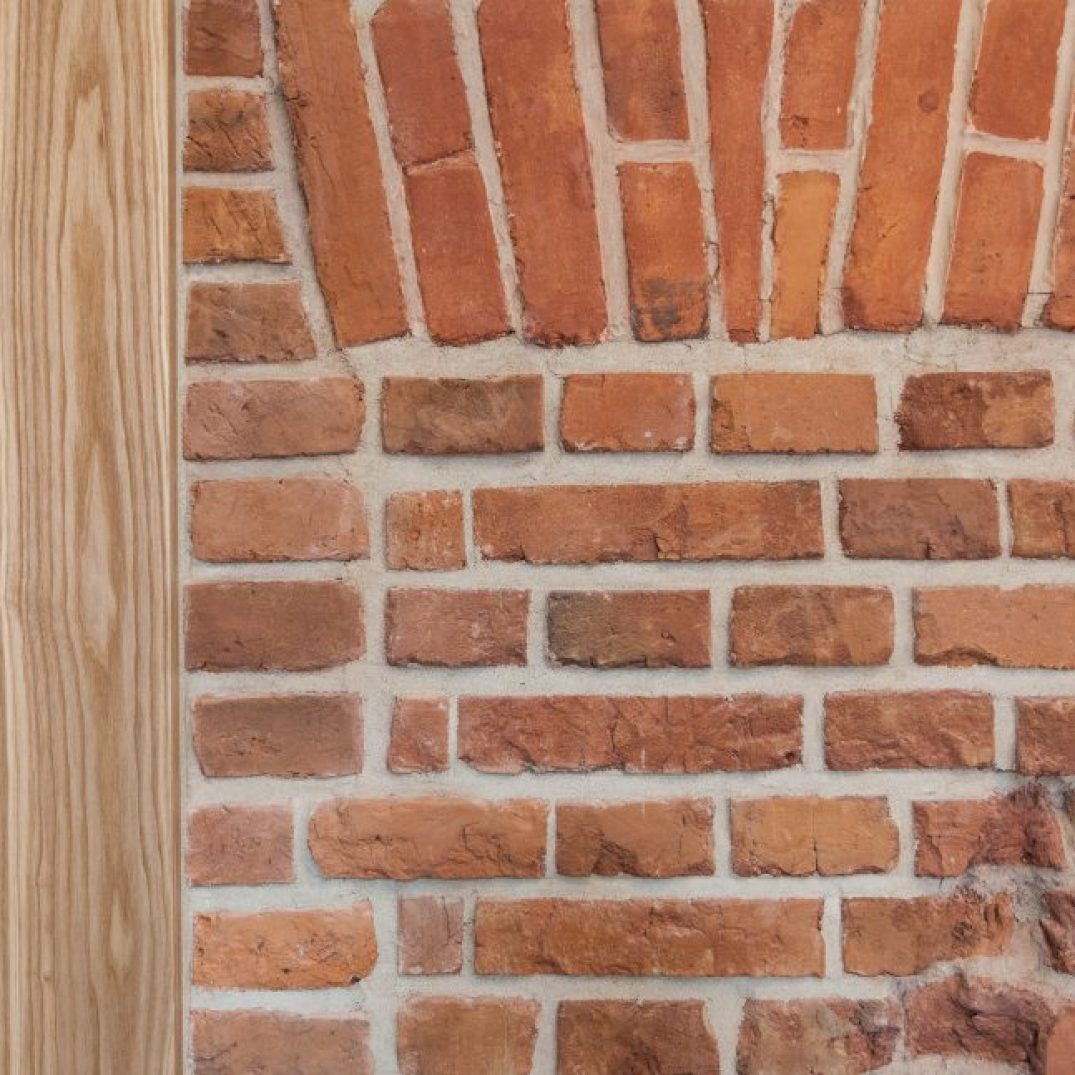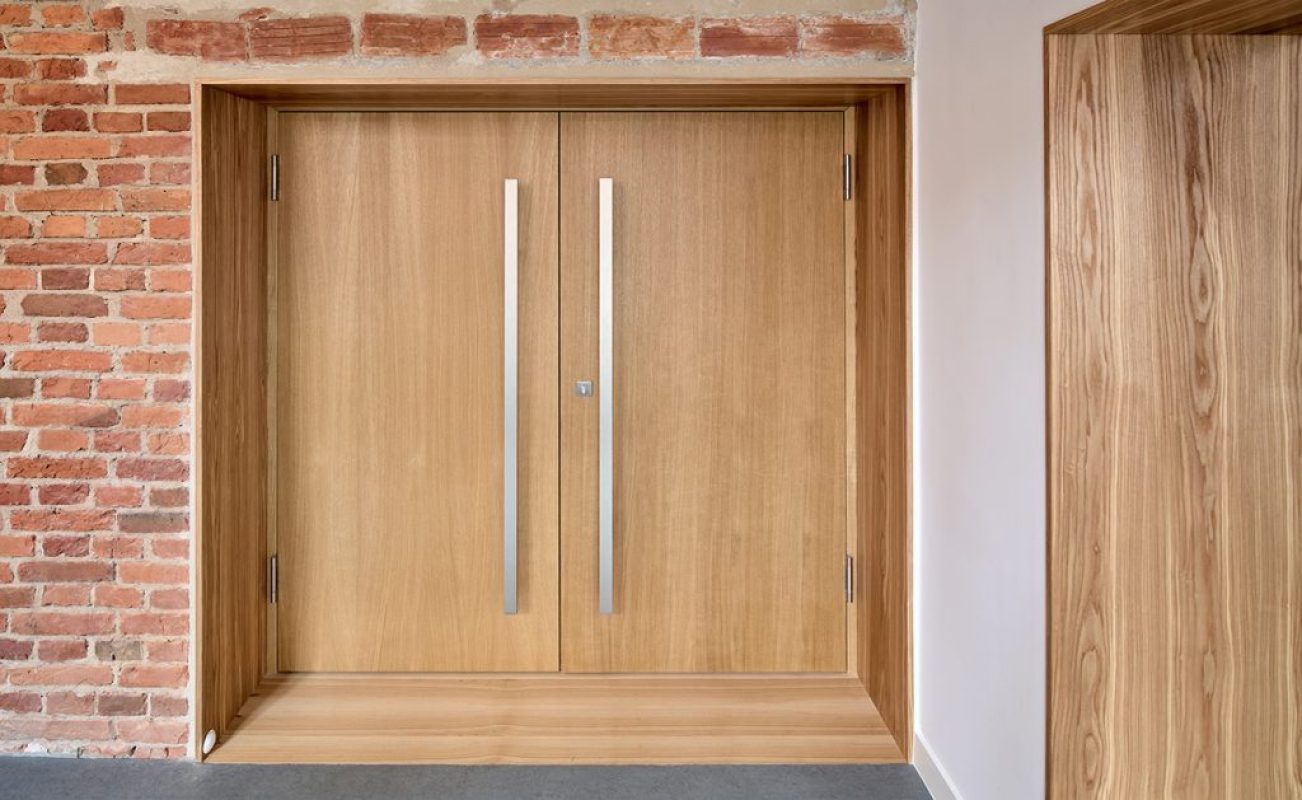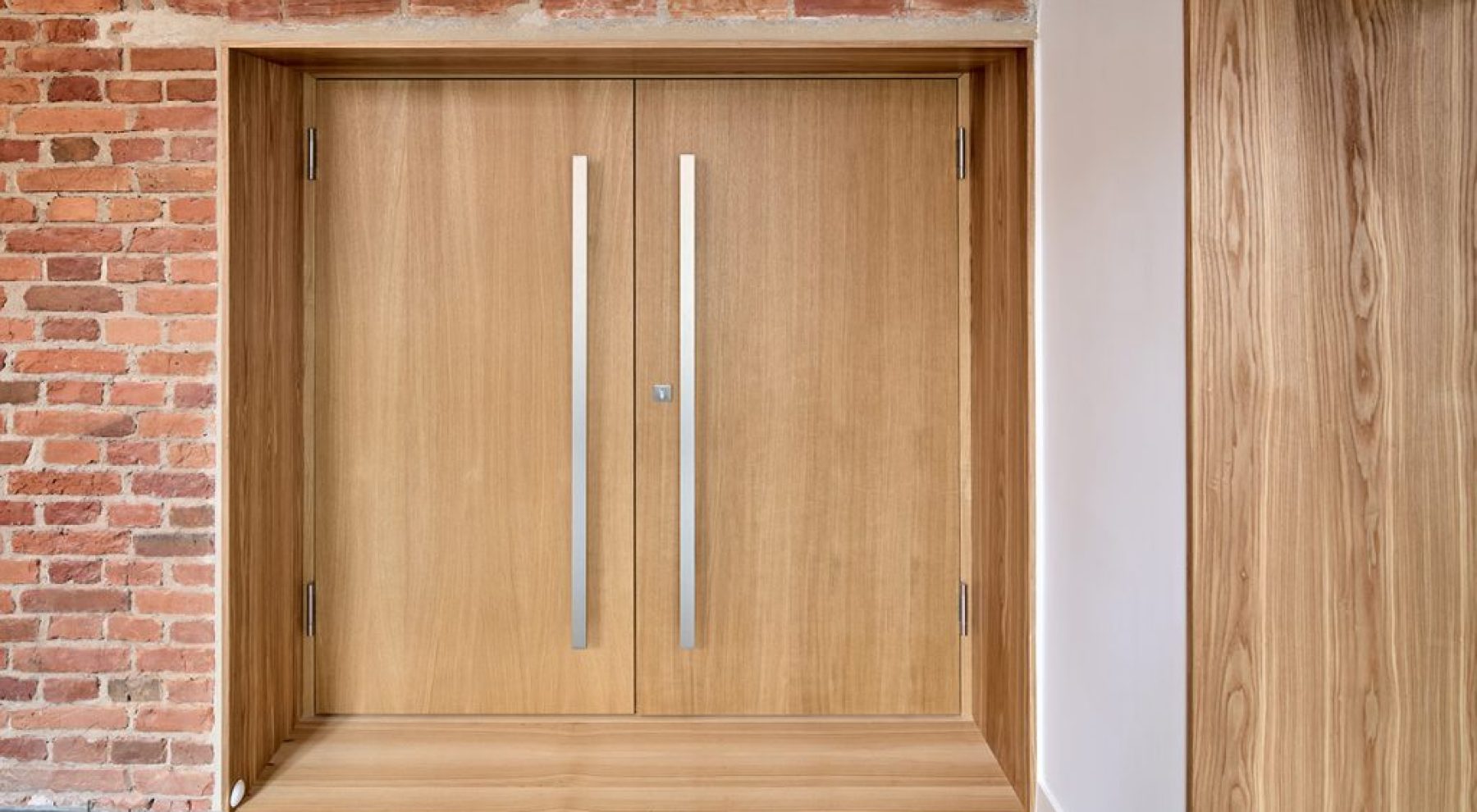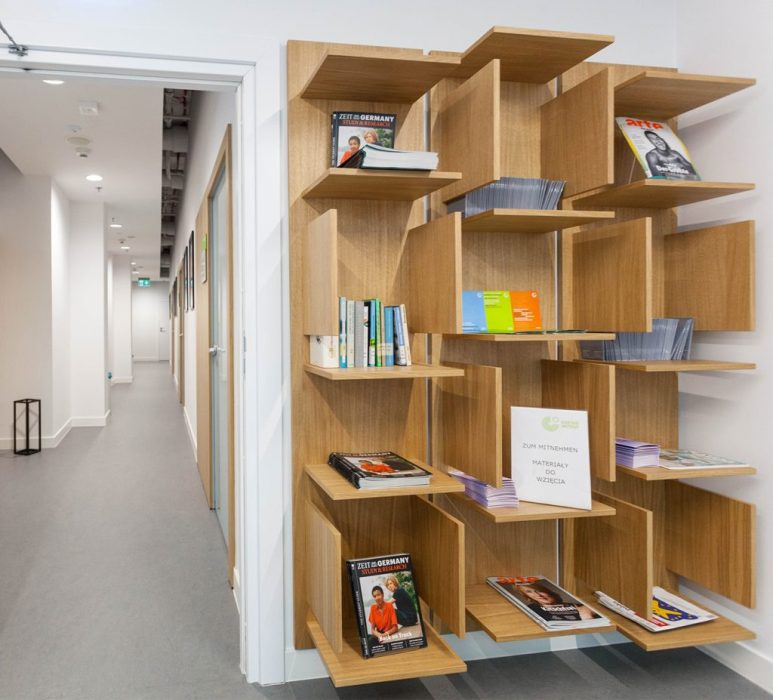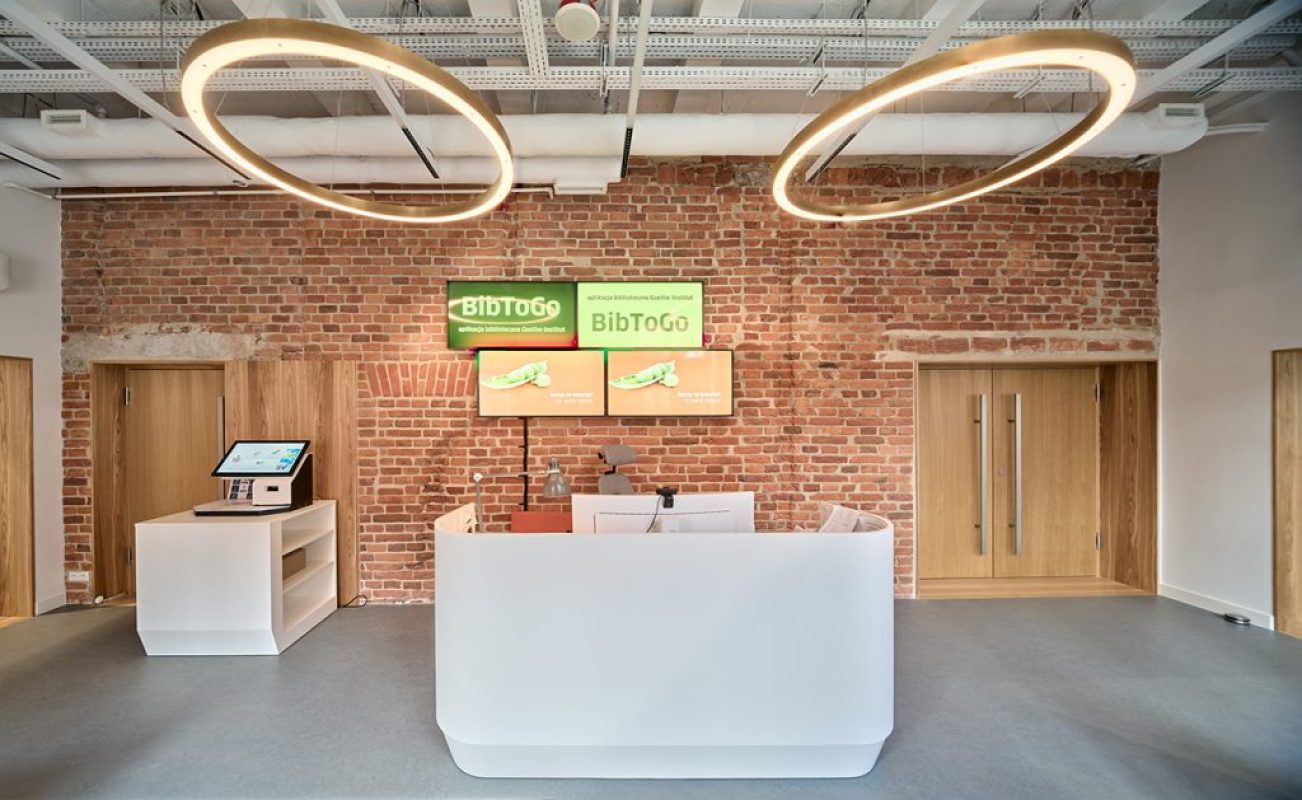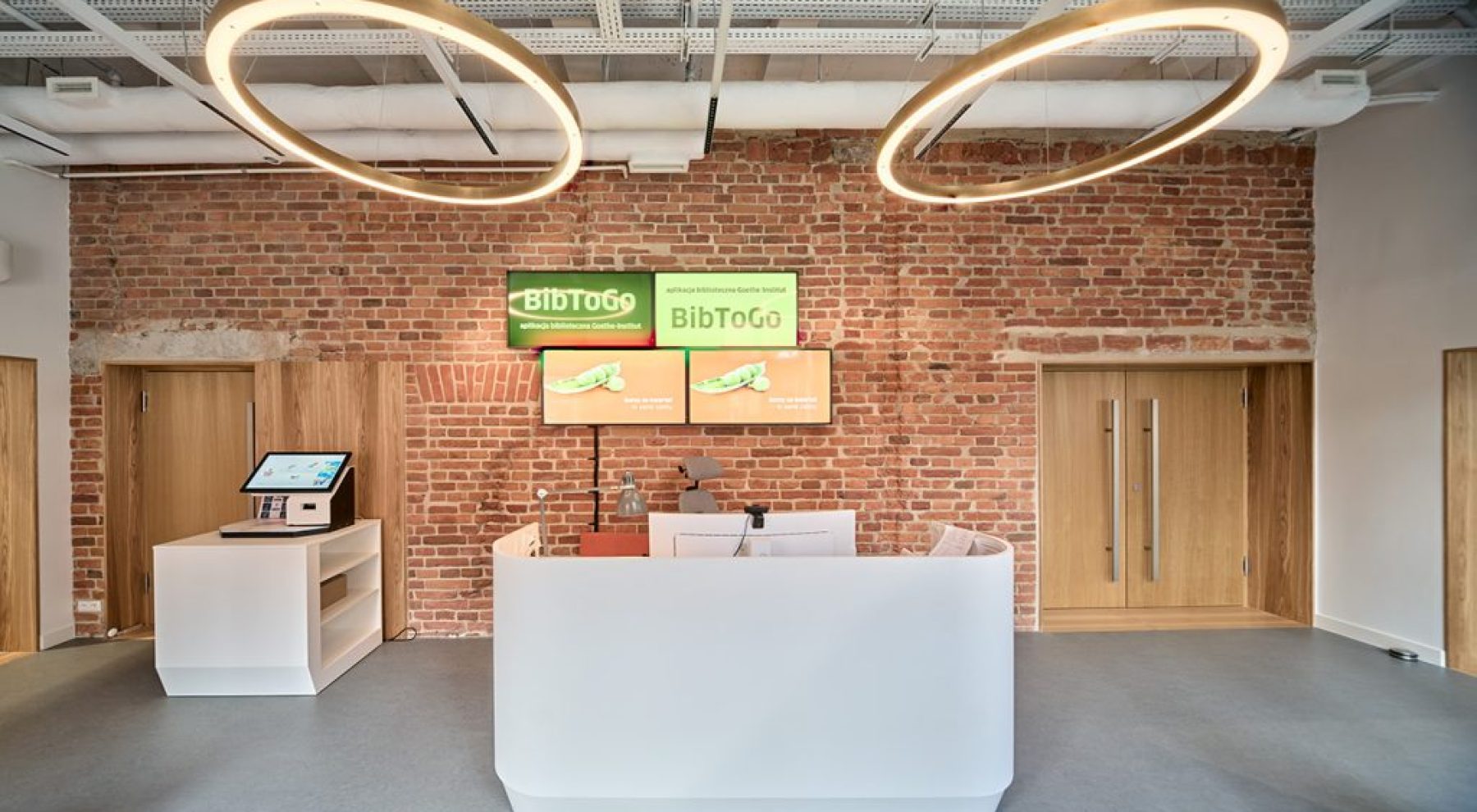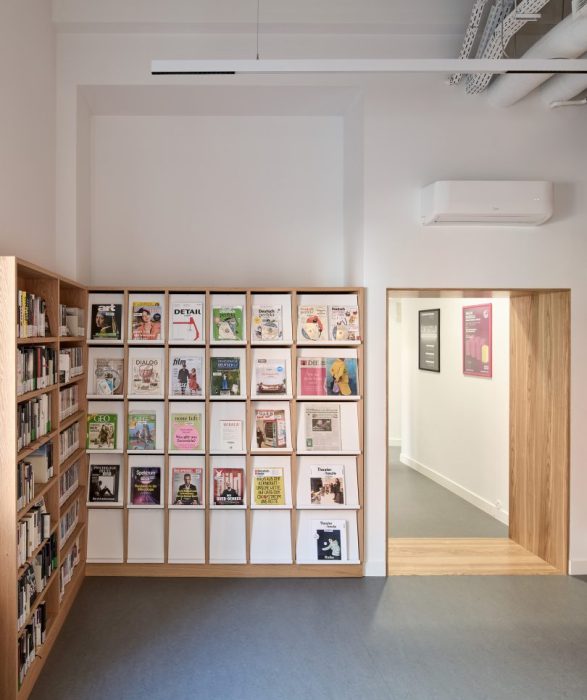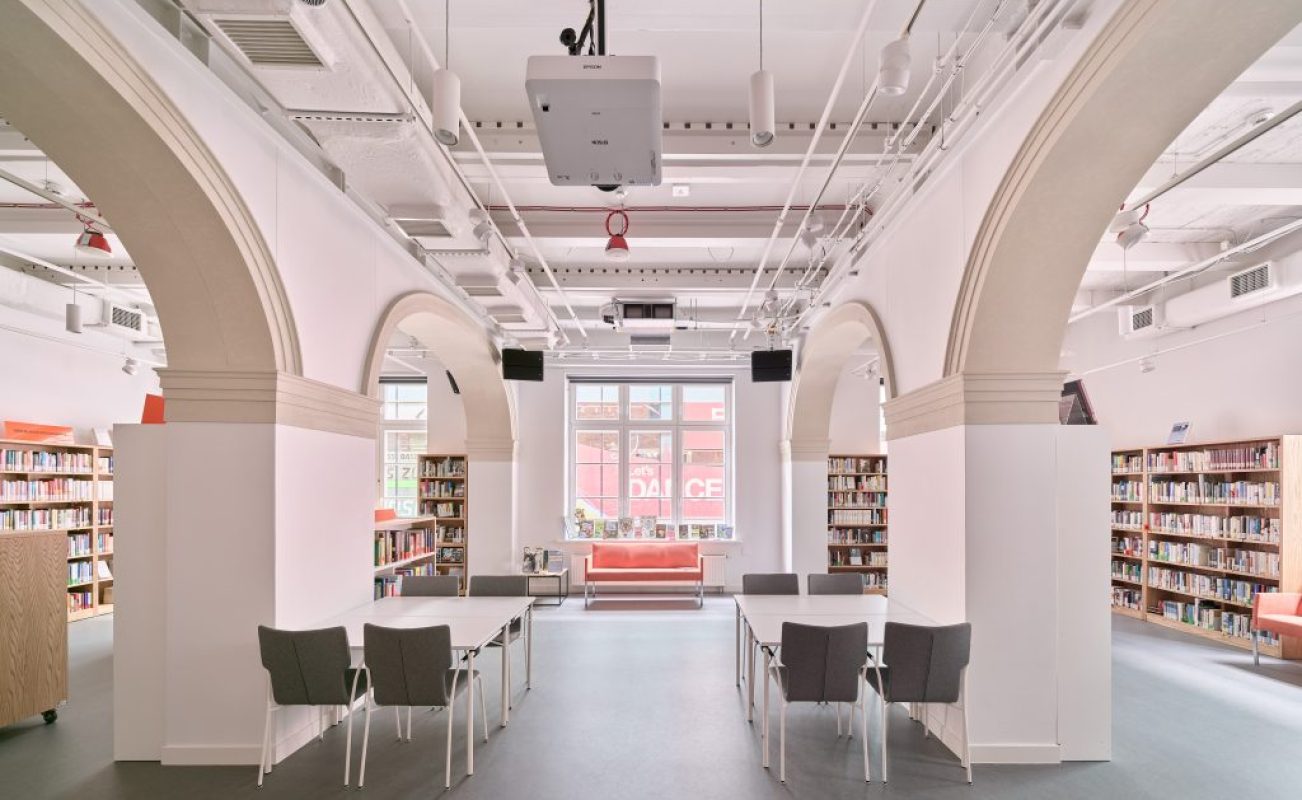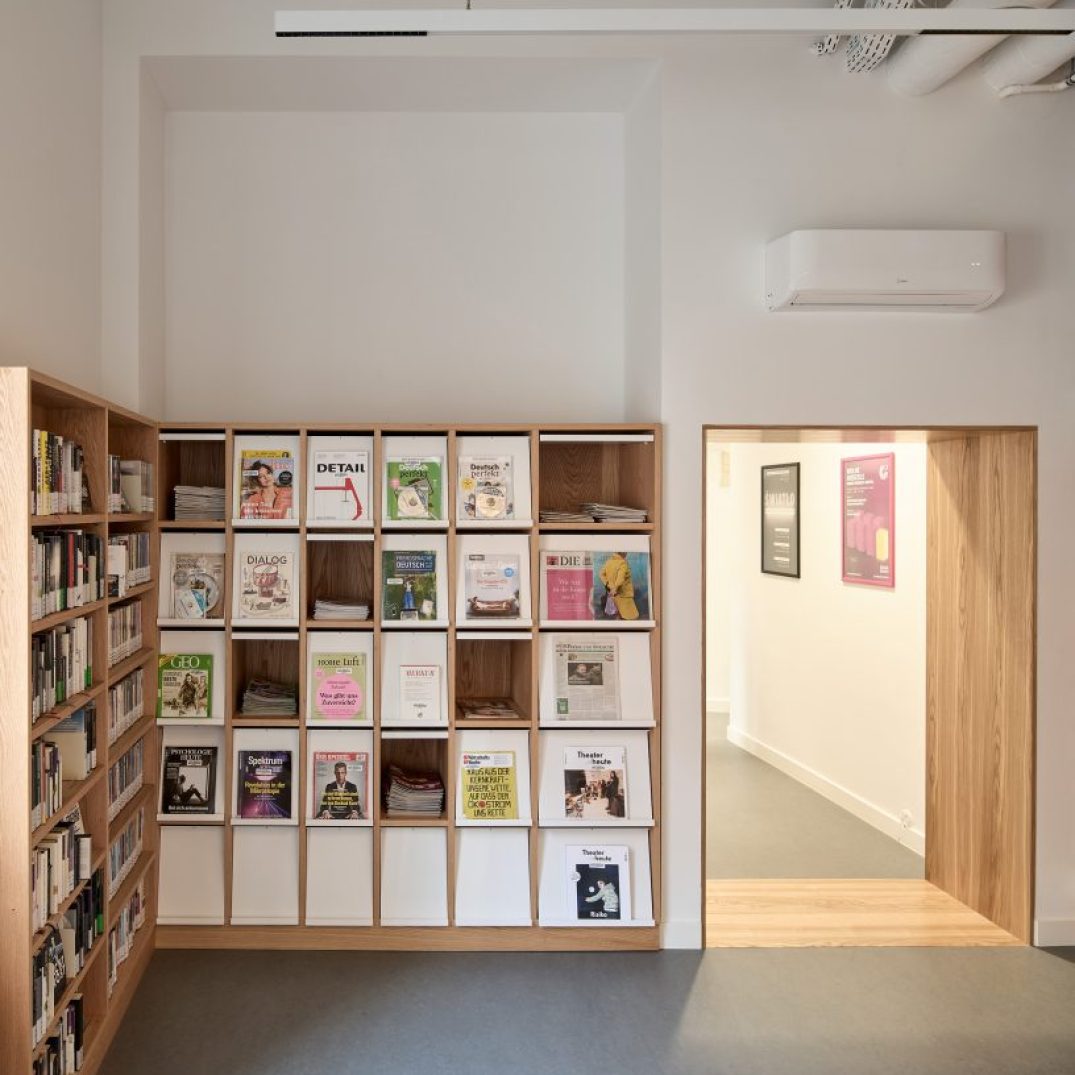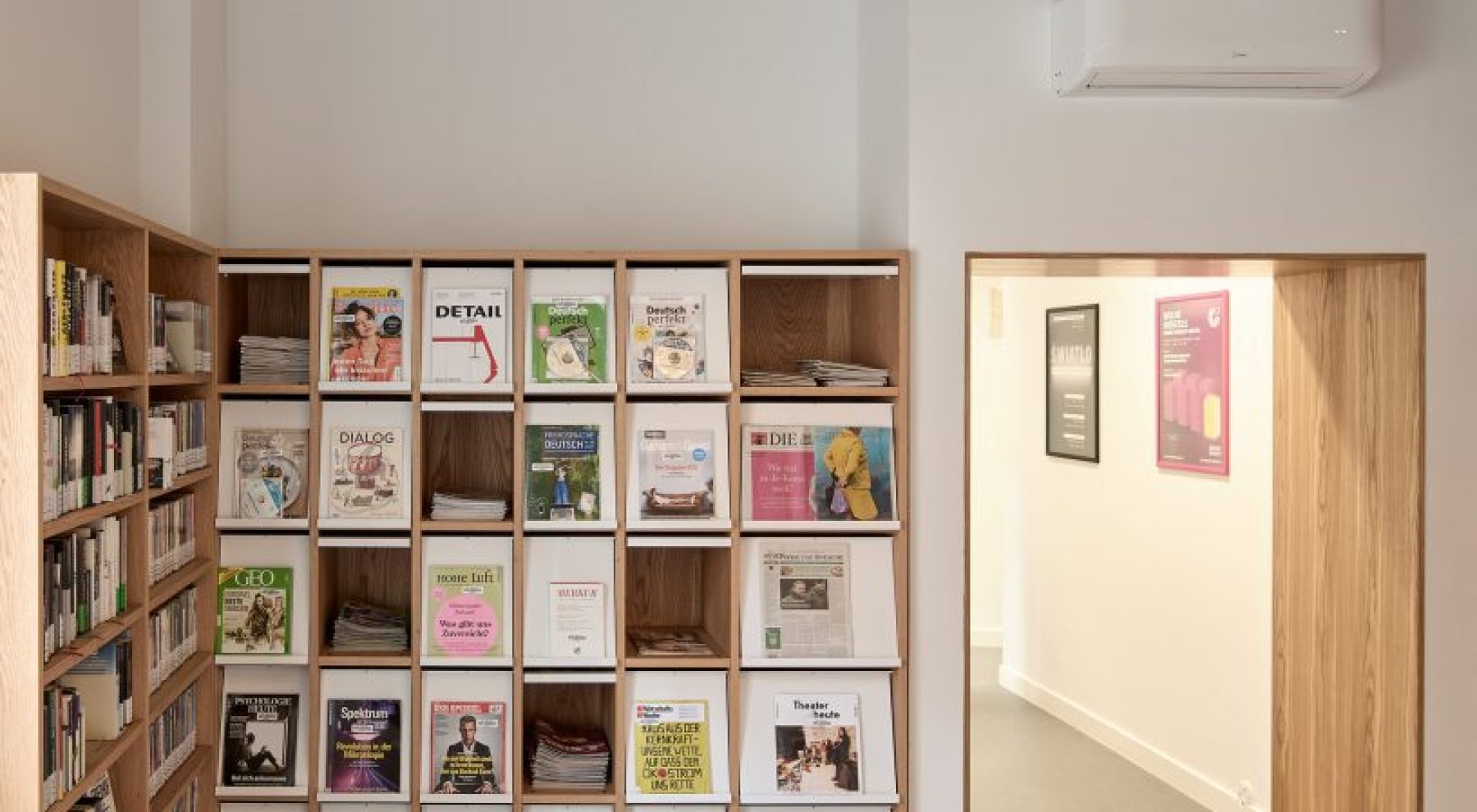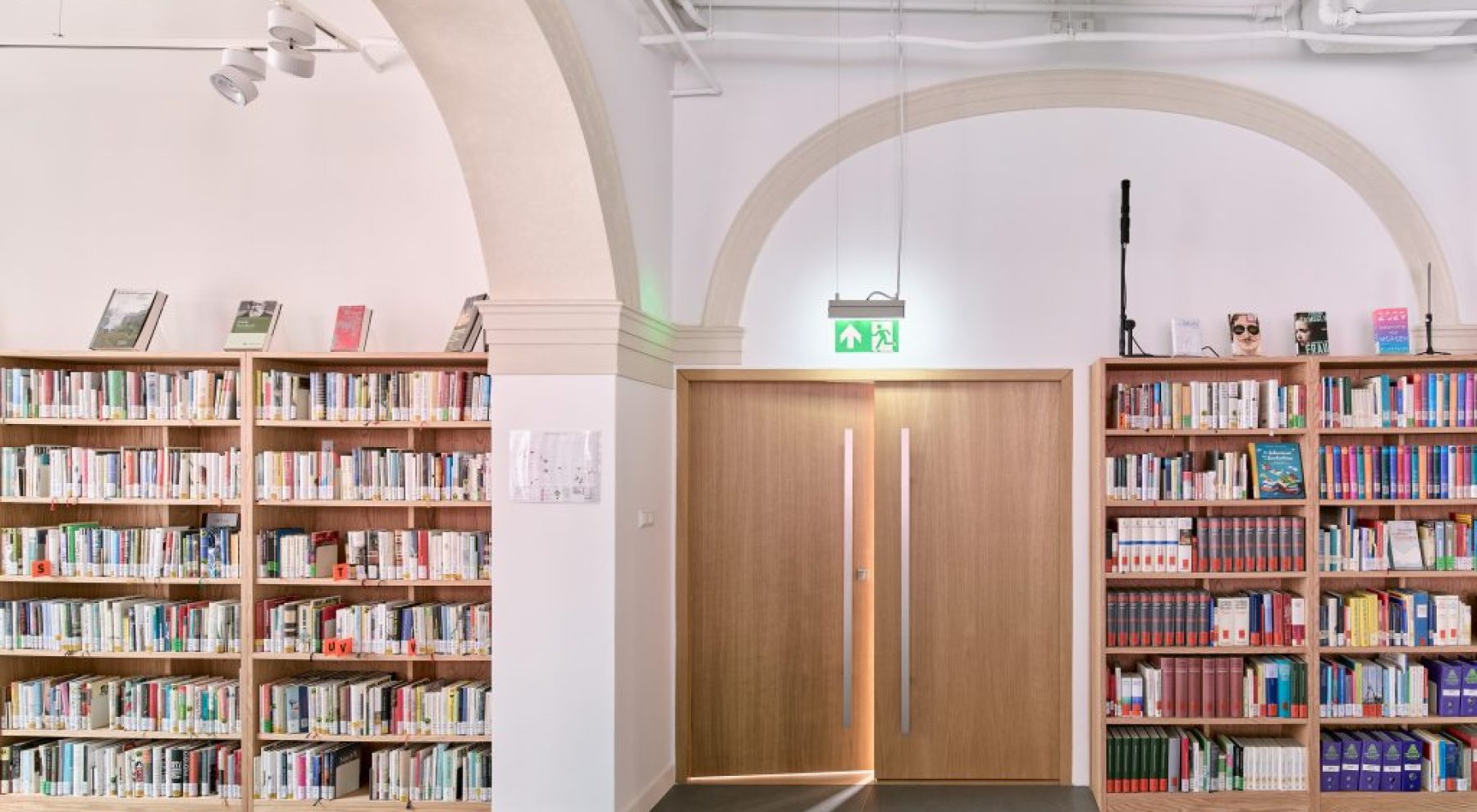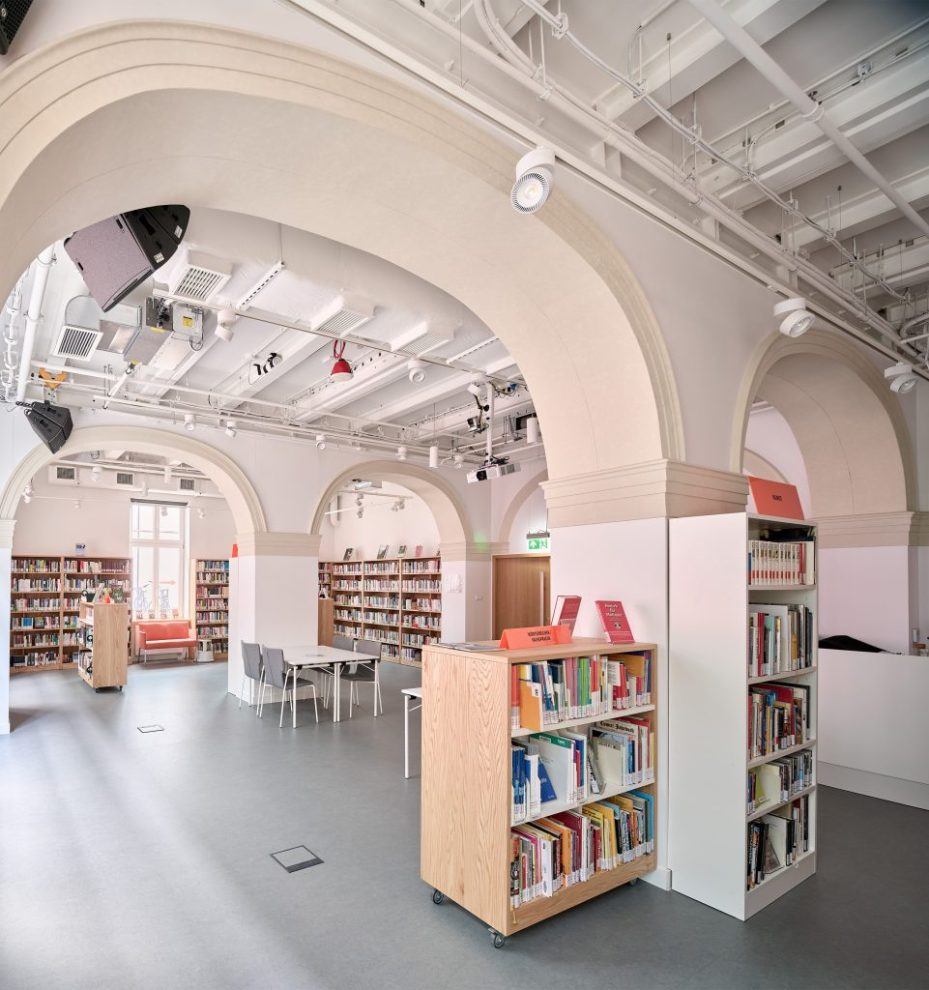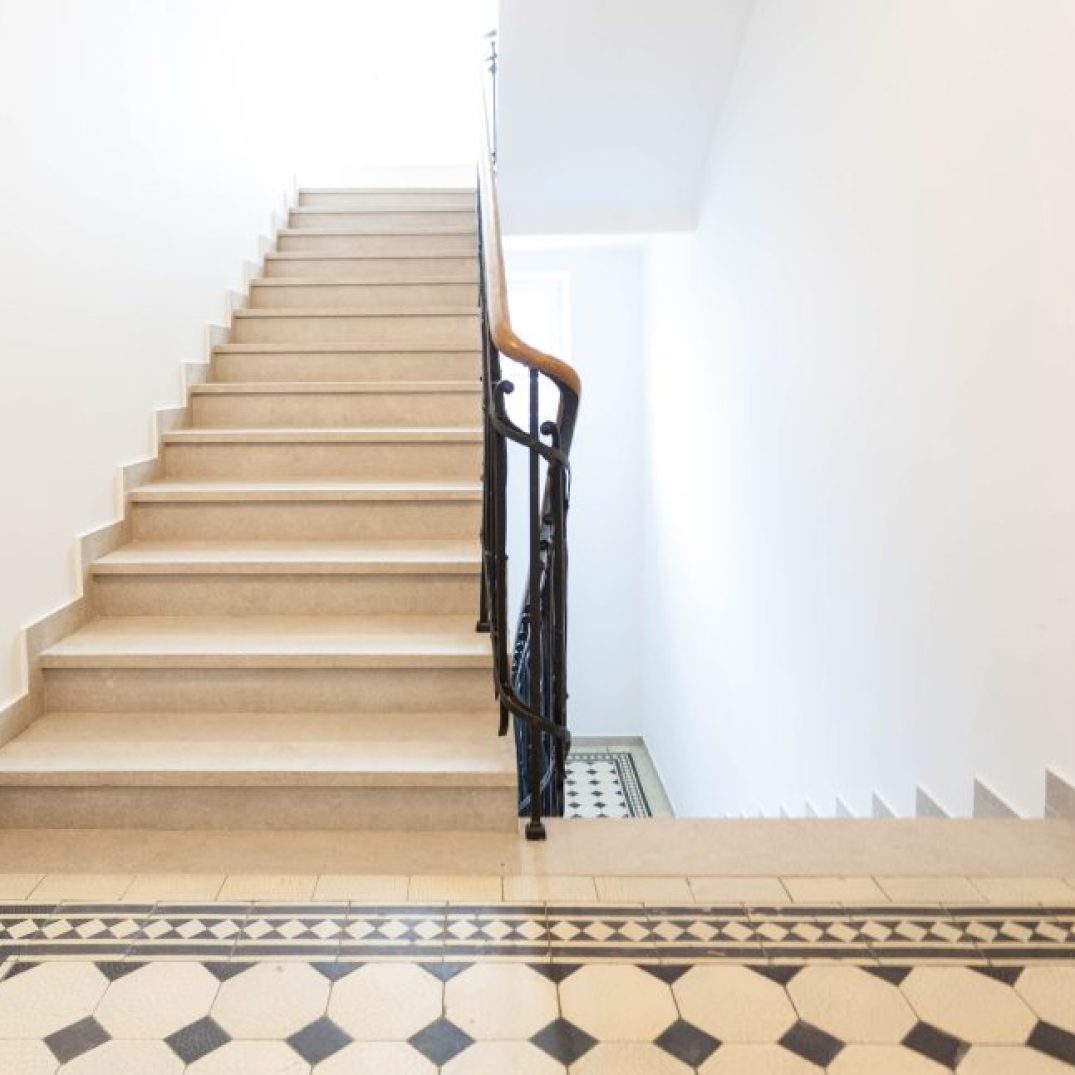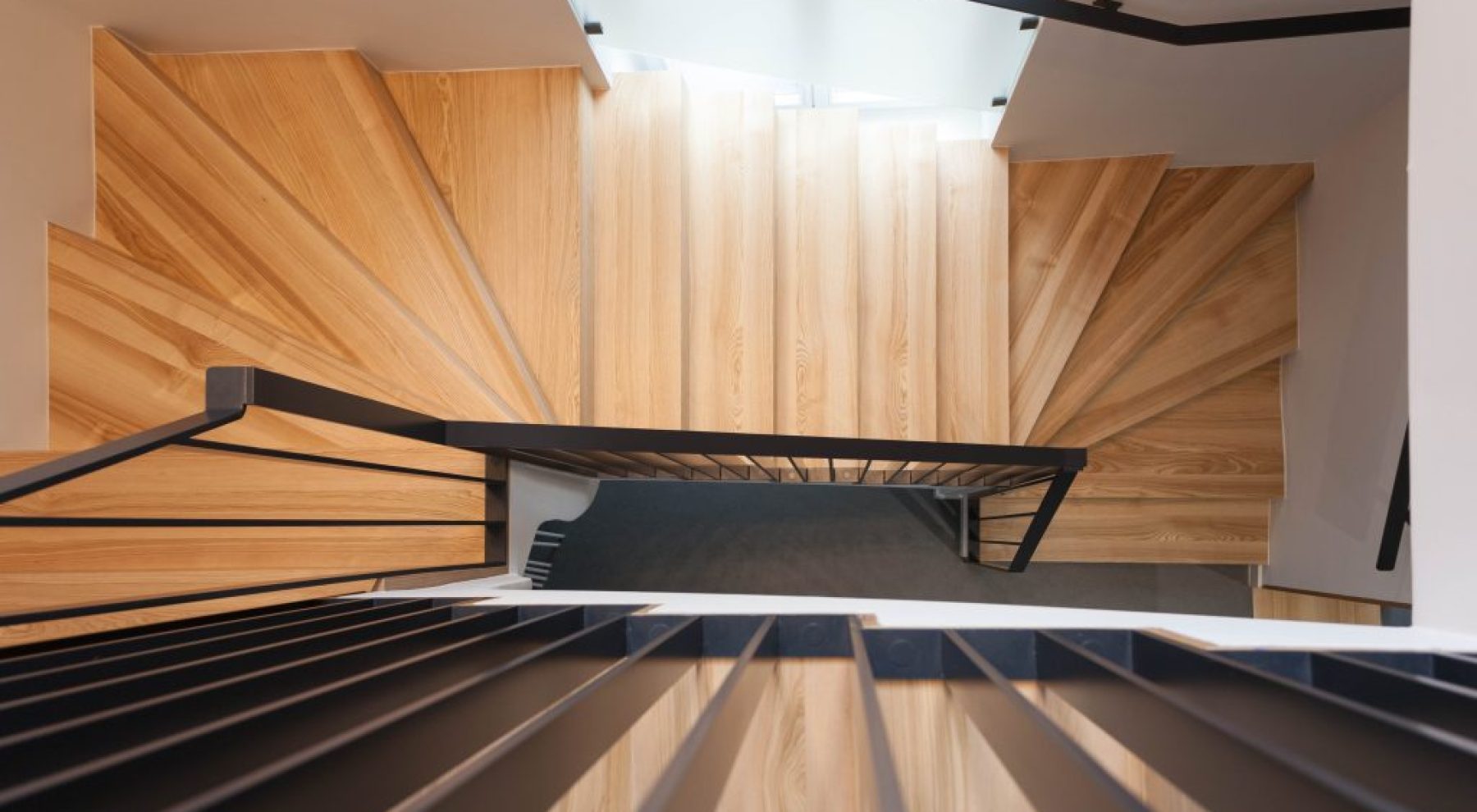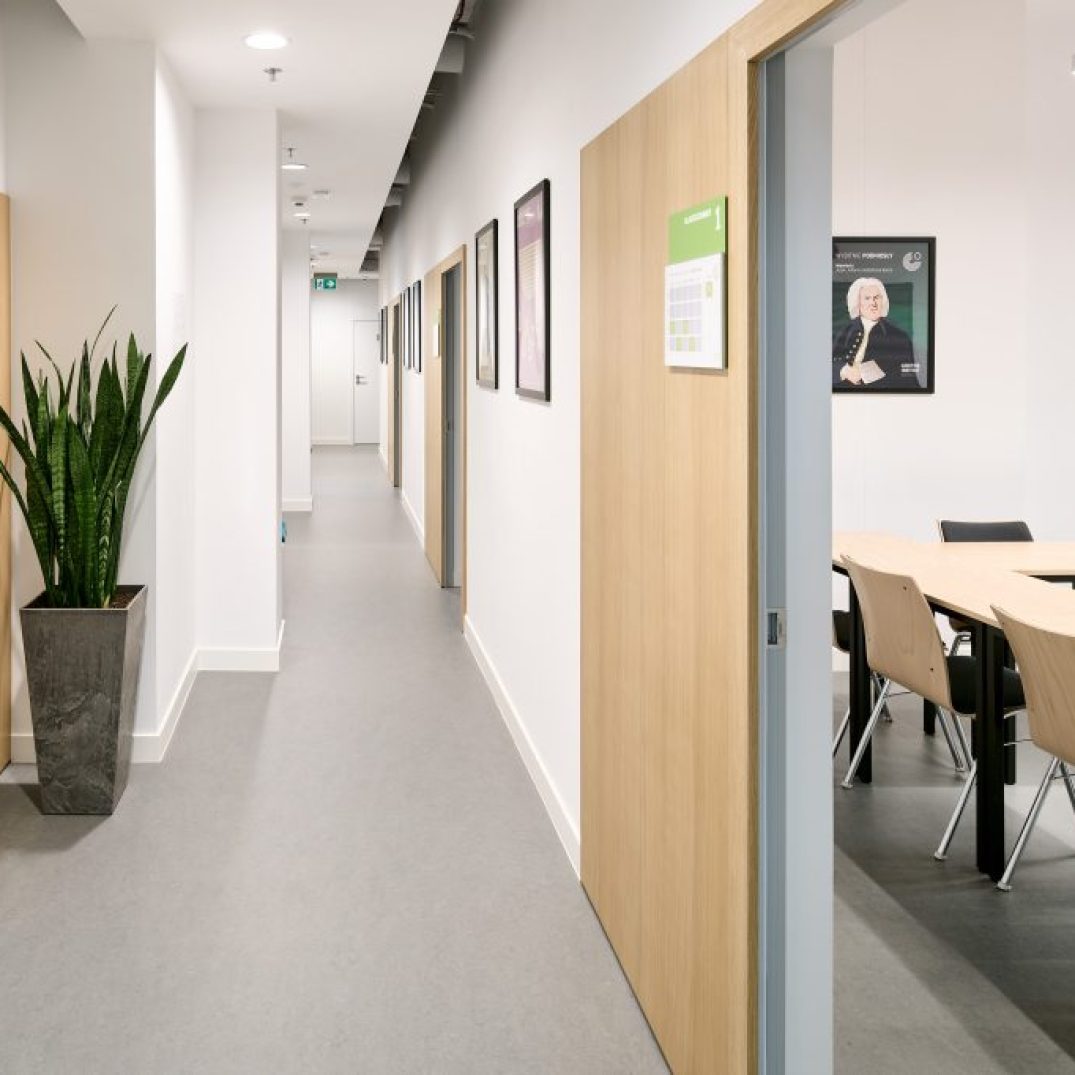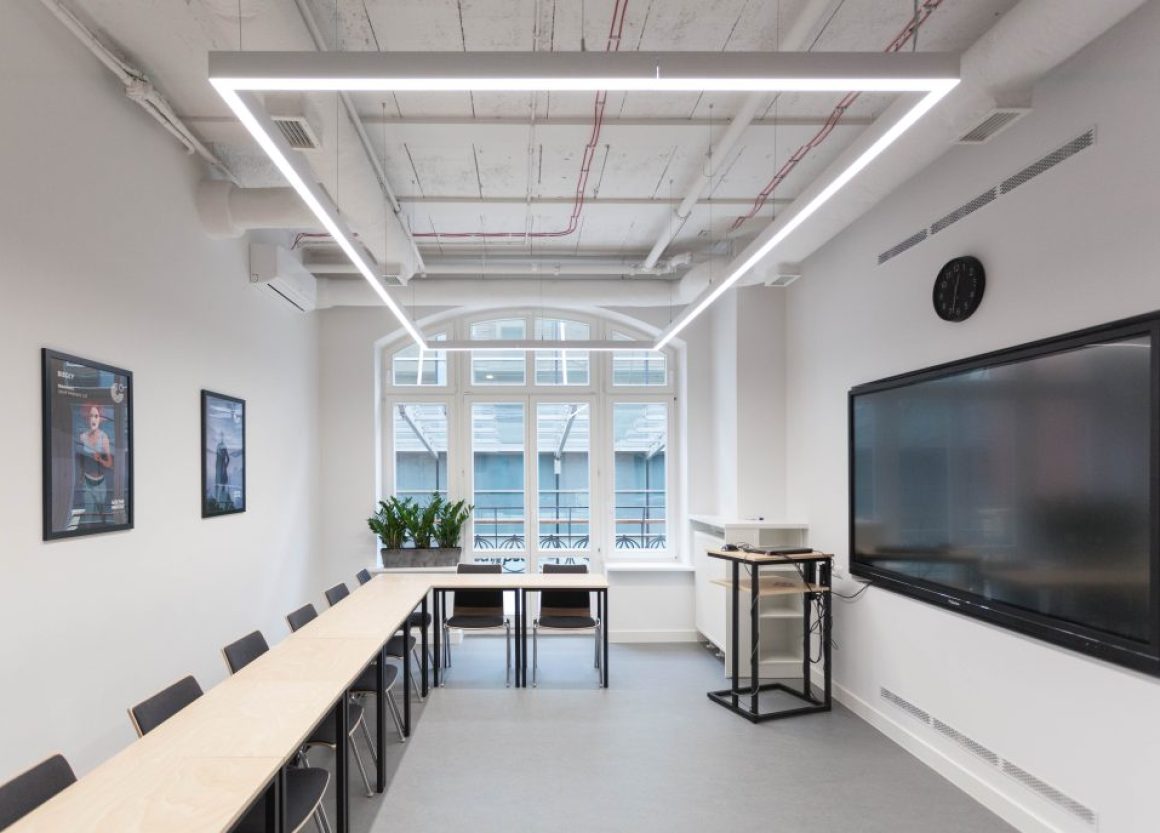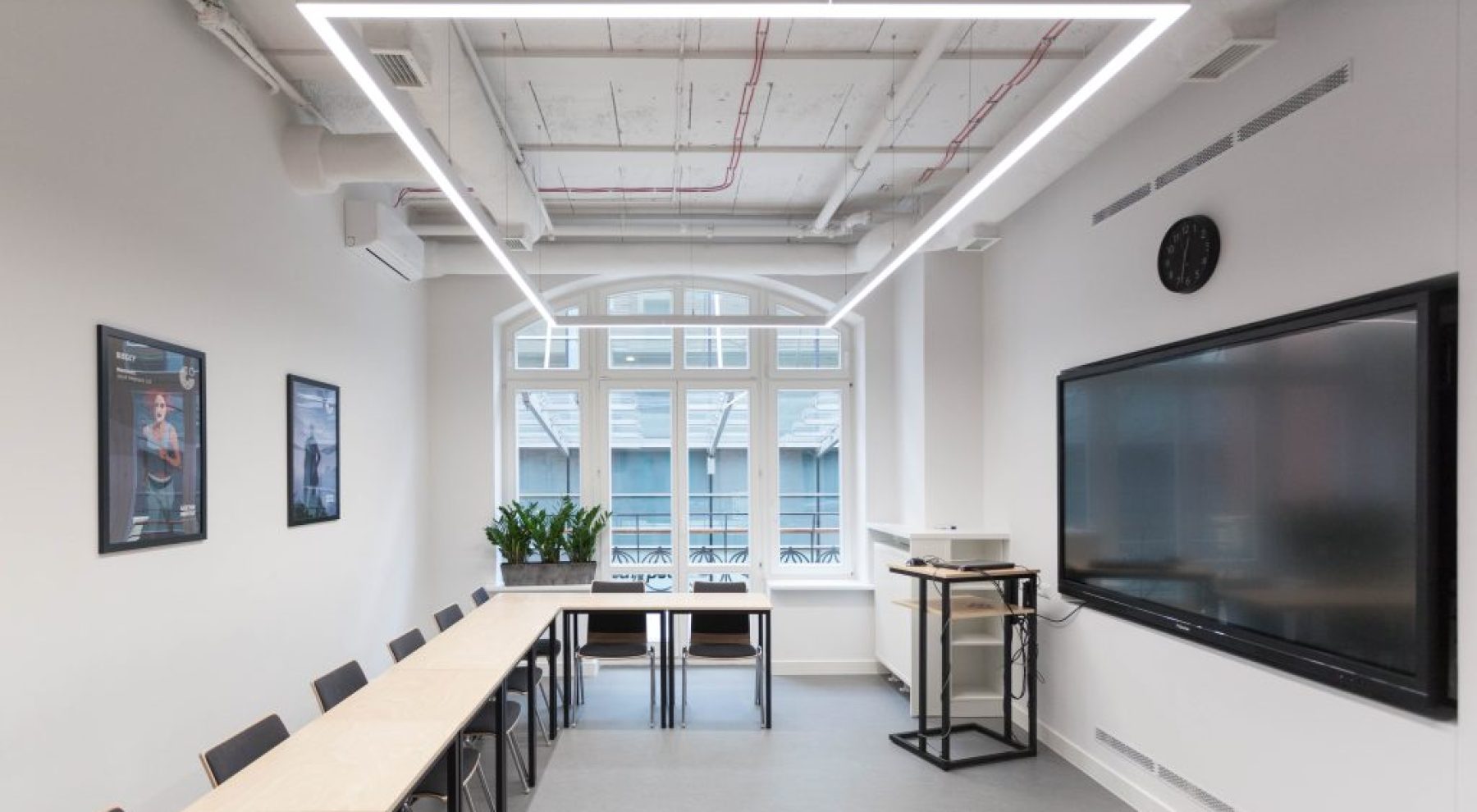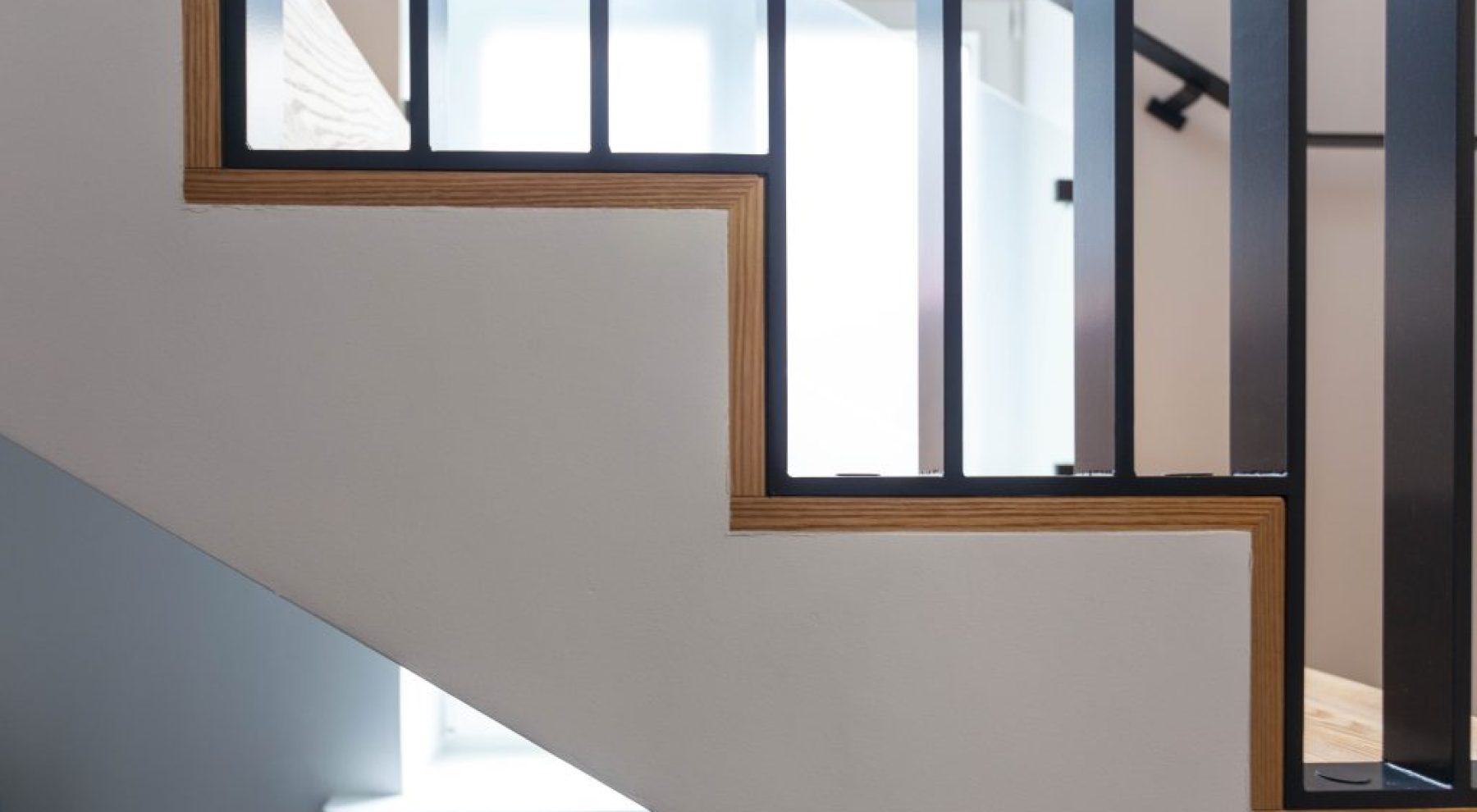Goethe Institut
Location
Client
Program
Size
Budget
Year
Status
Team
Work genre
Photography
Jakub Certowicz
History:
In 2019, the management of the Goethe-Institut in Kraków decided to relocate its headquarters, which had previously been situated in the city center on the Market Square. It was moved to the historic City Slaughterhouse complex built between 1877 and 1878 in the Kazimierz district – now part of the Kazimierz Gallery Shopping Center.
The facades and roof of the building were in very good condition. Its interiors, however, lost their original character due to multiple transformations. For this reason, we set a goal of not restoring the historical image combined with high standards and needs of the Goethe Institute.
The first step was to get to the origin and analyze the history of the building with the help of experts in the field of historical buildings. We were supported by: mgr inż. arch. Maria Filipowicz, MA. Elżbieta Majerczyk-Widerska, Michał Witkowski and Daniel Tylka. Then a concept was created, for which we obtained the approval of the Municipal Conservator of Monuments.
The main hall:
A unique element we saw in the building was the arcade of the largest room at ground level. In this space we designed a cultural hall (library and venue for cultural events). After demolition works started, more historical elements were discovered.
It turned out that not all historical arches were preserved. It was obvious to us that they must be reconstructed. This forced us to change the routes of all designed installations.
After analyzing plaster samples of the exposed arches, their original color was determined and used in the restoration of the existing and reconstructed elements. The historic main staircase received new treads, referencing the sandstone of which the building’s base is made.
Reception area:
To emphasize the historic nature of the building, we decided to expose the brick wall of the building in the reception area. Brick in the interior refers to the external elevation.
We have warmed up the raw expression of the historical fabric by using light ash wood in door finishing elements, stair lining and library furniture. We introduced wooden portals leading from the reception area to the building’s three main functional spaces: the cultural hall, office spaces, and classrooms.
Technology and new materials:
The Goethe Institute’s commitment to sustainability resulted in the use of 100% eco-friendly materials throughout the building, such as linoleum for the floors and natural wood. A highly energy-efficient ventilation system with energy recovery was also used.
Designing installations in historic buildings is a challenge for architects. In this case, we decided to leave all the installations visible, with an emphasis on their composition with the historic structure, thus providing a contemporary chapter in the building’s history.
Stairs:
Vertical communication in the building is provided by two staircases.
The historic one, which was restored leaving the original mosaic, balustrade and handrail. Stone tiles in the color of natural sandstone were used on the restored steps.
The modern one, leading to the lecture halls, received a new minimalist aesthetic, contrasting with the historical elements. The cladding of the steps was made of wood and the handrails were made of black painted steel.
Classrooms:
Most of the rooms on the second floor are used for teaching purposes. Students have also at their disposal a lobby as a meeting place and a reading corner. While designing the space we aimed at functional and maximum use of it. The minimalist aesthetic is suited to focus and study.
Art Gallery:
Next to the main building is a small gateway building that will serve as an art, workshop and temporary exhibition space.
The interior has been adapted for film projection. The ceiling was designed in the form of two lowered cubes between which a stretched ceiling was introduced to illuminate the interior evenly. At the entrance is a neon sign Kuns(z)t, created by the artist Mirosław Bałka, which is a play on the words Kunst (German for art) and the Polish word kunszt (craftmanship).
